I had a busy first full day in Kyoto (my second day in the city), visiting the Heian Shrine, Konkaikōmyōji (also known as Kurodani Temple), Ginkaku-ji, Philosophers Walk and Hōnen-in temple. Even though I have a mountain of writing to do my blog postings have decreased over the past two months, sorry about that. This is in part because of a lack of confidence combined with the daunting amount of information Kyoto presented; I haven’t even thought about all the followed Japan. There are a few other factors for my slacking off, but I won’t get into those.
Kyoto has a wealth of history, a lot more than I expected, with that comes an abundance of things to see and places to visit. In fact, my original plan of staying three days was blown out of the water. Instead, I made Kyoto my base for the remainder of my time in Japan, only leaving twice; with separate day outings to Himeji and Hiroshima. Before heading to Kyoto, I wanted to visit Mount Fuji, but that would have taken me two days. You can do Mount Fuji in a day trip from Tokyo, but like I’ve said previously, I don’t like group tours. Mount Fuji was sacrificed because of the time taken up in Tokyo caused by my hotel debacle (Tokyo Part 2).
Shinkasen / Bullet Train
I got to Kyoto with the Shinkasen. Going on the bullet train is something I’ve wanted to do for ages. I’ve been on trains thousands of times, including highspeed, but the Shinkasen is the original, and still in the top 10 fastest trains. A single trip is quite expensive e.g. a one-way from Tokyo to Kyoto costs around ¥13 080, Kyoto to Osaka ¥1420, Kyoto to Hiroshima ¥10570. If like me you plan to do a few trips then I would highly recommend buying a Japanese Rail Pass, commonly called a JR Pass. I bought the 7 day JR Rail Pass for ¥29 110 (normal pass, not First Class). This allows you to use all government transport for the duration of your pass underground/Metro, busses, trams, trains and the Shinkasen.
NB. There are private Shinkasen companies for which the JR Rail Pass is not valid. Government Shinkasen are the Sakura, Hikari and Kodama. These services do cover most of the country but not all. Meaning that some routes you swap over to a normal train. Saying that, their normal trains are better than most countries; not flashy, but punctual down to the second, without doubt, the cleanest public transport I’ve ever used.
To buy the pass, go to any large station (possibly any station, I bought mine at Tokyo Central Station), take your passport with you. It’s very efficient as you would expect, the whole process took 5 minutes and I had no problem with the language barrier.
Some interesting observations on the Shinkasen:
- You always face in the direction of travel. The train arrives 10-15 minutes before departure when it is cleaned, no one is allowed inside whilst they do this. Then all the rows of seats swivel around to face forward – a simple idea but ingenious. As a result of the swivelling seats you get more leg room, considerably more than the trains in the UK.
- Ticket inspectors bow as they enter each train couch, then again turning around to bow before they exit.
- All the passengers are also so quiet – that goes for all the Japanese transport I used.
Accommodation
I stayed in three places whilst in Kyoto, nothing wrong with either of them, I just couldn’t extend my stay at either because they were fully booked. UNIZO Inn Kyoto Kawaramachi Shijo (Monday, 9th April till Thursday, 12th April) was the first place I stayed in, right in the centre of Kytoto’s shopping district. I walked from Kyoto Station to the hotel, the area around the station (very big station and interesting building too.
Leaving Tokyo having had another great coffee at Berth Coffee shop, I arrived a little late in Kyoto to be productive. So, I took the rest of the afternoon off just to get my bearings and do a little research so that my next day would be productive. The local map the hotel gave me was actually very good – that combined with Google is all you need. I don’t have much to say about the hotel, other than it was a little bigger than what I had in Tokyo, not by much. Still, it was compact with everything you could possibly need, with the customary friendly staff.
Jumping back a little, I did my usual walk from the station to the hotel (when distance permits), it was only 3km. I like doing that because it helps give me the feel of a place and bearings. Kyoto station itself is an interesting and building but the first thing you see when you leave the station is Kyoto Tower. A pinnacle rising high above its surroundings, towering over the city like a watch tower or lighthouse. The walk to the hotel gave me tantalising glimpses of some of the temples and shrines. If I only got to see/visit what I walked past from the station to the hotel I think I would have been satisfied.
However, these glimpses were nothing compared to what I would see during my five days in Kyoto. Though the walk was interesting, it had phases from around the station which is quite commercial. Then through a bland area, more residential, then finally at my hotel which was very busy and commercial – a lot more so than by the station

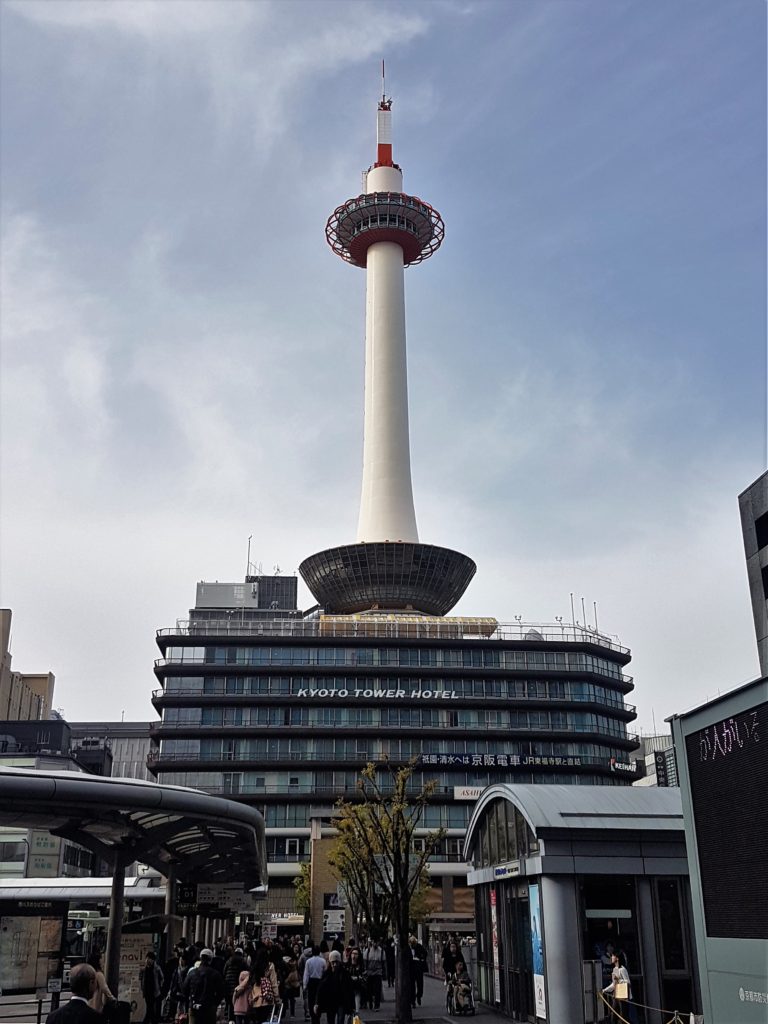
Kyoto Locations
It might seem obvious but finding a good location to stay in in Kyoto does make a difference. There is public transport, so getting around is easy. Why spend lots of time travelling when you can base yourself near the action with little difference in price. For me Kyoto has three main districts:
- South – by the train station
- Central – on the West side of the river and includes many hotels, shopping malls and the Nishiki Food Market. This also includes the Pontocho area for Geisha spotting
- East – Gion region, which is traditional and a Geisha spotting area
NB. I’m certainly not saying that all Kyoto has to offer are in these areas, these are just good locations to base yourself. Kyoto is packed with historical and interesting sites North, South, East and West….in abundance. That’s enough rambling on without getting much said. I could have just said (as I have already), the first day wasn’t productive. My planning was done for the next day. I started off with an interesting breakfast at the restaurant downstairs adjoining the hotel.
Heian Shrine
Plan was to start the day off halfway up philosophers walk heading to Ginkaku-ji. If I passed anything interesting along the way I’d take a look, that’s how I ended up visiting Heian Shrine. What caught my attention was the huge torii marking the entrance to the shrine complex…the biggest I had seen! It looks a lot newer than many of the shrines I had seen in Tokyo and the few I say the say before from the station to my hotel.
When I arrived at the main gate (romon) I was a tad dismissive of the place with its lack of patina. Simply put, it looks new because it is. As I’ve mentioned previously (my posts on Tokyo), Kyoto used to be the capitol of Japan, that in part is what makes this shrine special. Heian-kyō is one of the former names for Kyoto. Meaning, Heian Shrine is in fact a shrine in honour of the old capitol of Japan (that’s the short version).
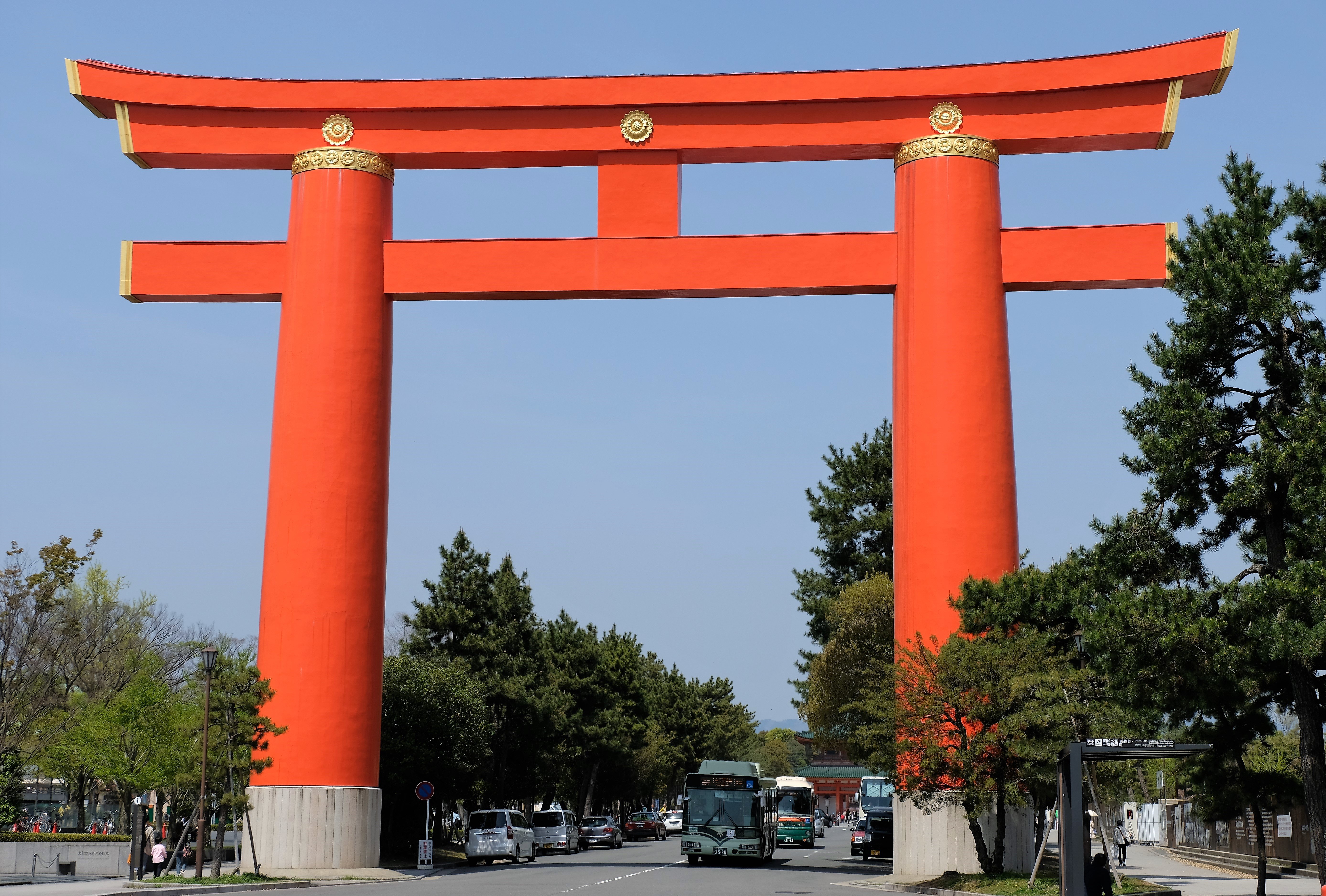

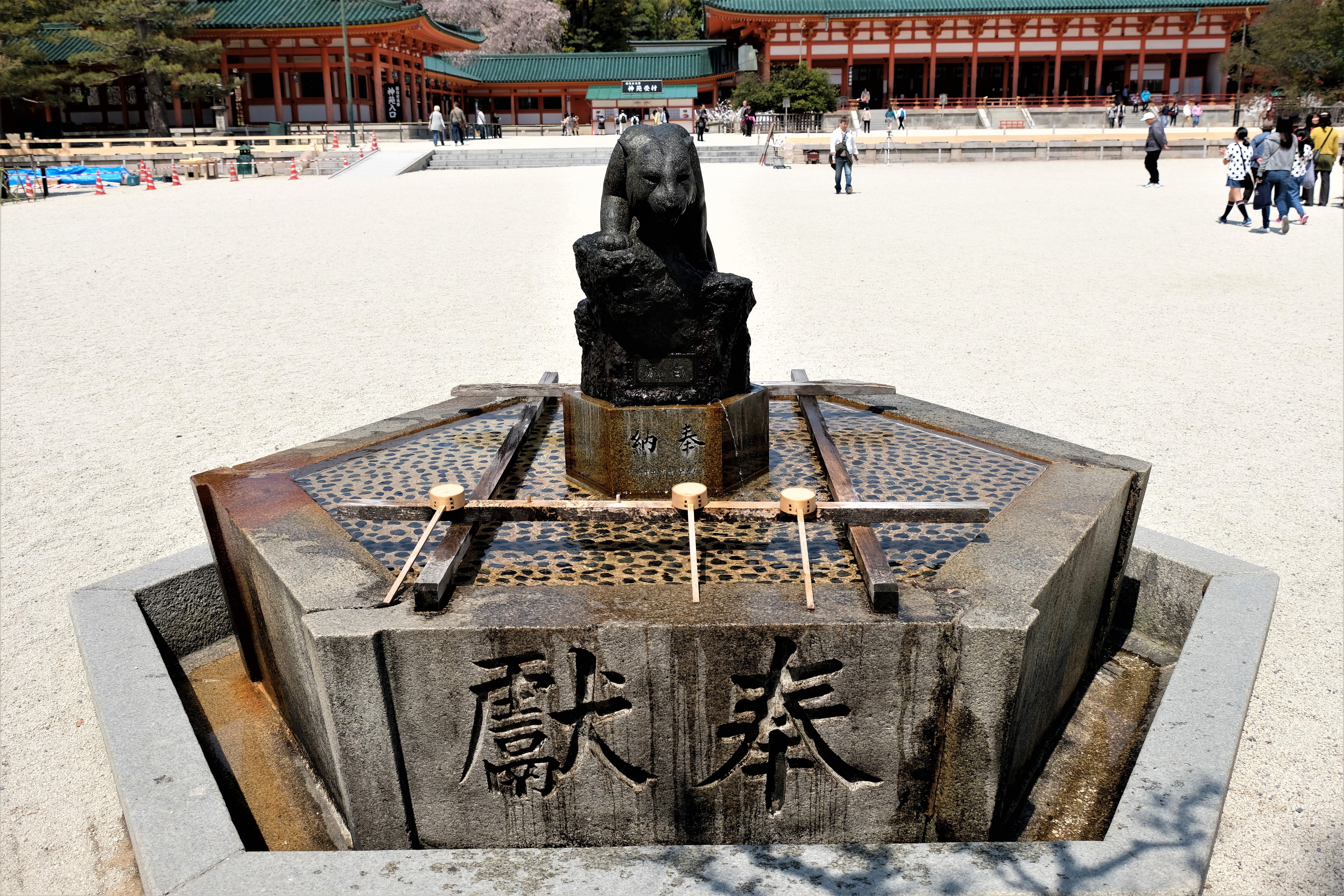
After my research, long past me visiting the Heian Shrine things are a little ambiguous. For this reason, I hope I get my facts right. Heian Shrine was originally not a shrine. It was built as a smaller scale reproduction of Heian Palace for an industrial exhibition marking 1100th anniversary of Heian (Kyoto). After the exhibition the structure was converted into a shrine in honour of Emperor Kanmu, the 50th Emperor. Later, in 1940, Emperor Komei was added as a deity. In 1976 large portions of the shrine burnt down (I don’t know the circumstances surrounding this), all was rebuilt three years later. Taking the above into consideration with the fact that Heian Shrine is rated as one of the top Shrine (Association of Shinto Shrines), there isn’t that much information about it.
Heian Shrine Gardens
As it seems with all the shrines, I had seen in Japan to date, the gardens play a pivotal role. The shrines/temples are in themselves beautiful and interesting, however their gardens range from beautiful to stunning. I’m no feng shui expert, however their gardens feel as natural as if mother nature created them with a personal touch. Their gardens give you the feeling as is they belong nowhere else except there. The world had waited thousands of years just for the conditions to be right for their gardens.
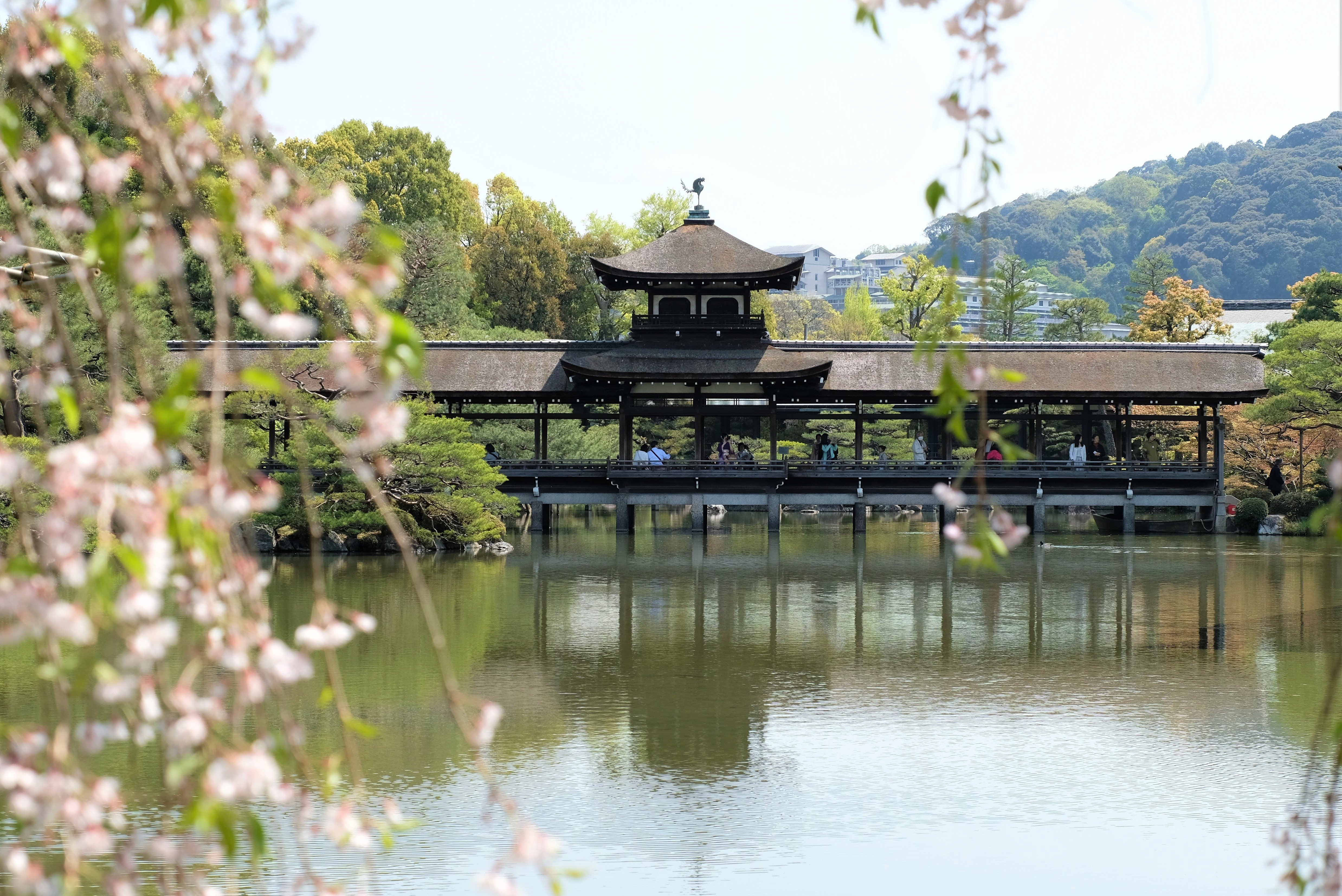

Even after the longest days of hiking/walking in boiling temperatures, strolling through their gardens brings calmness and tranquillity to the mind (even with hundreds of other tourists). I found the shrine mildly interesting, but Heian Shrine gardens are lovely and worth a detour. Writing in retrospect has its pro’s and con’s. On the pro’s side, you get to remember and comparatively. For the con’s, it relies on memory and research, but sometimes at the cost of loosing accurate description; both in memory and feeling at the time.

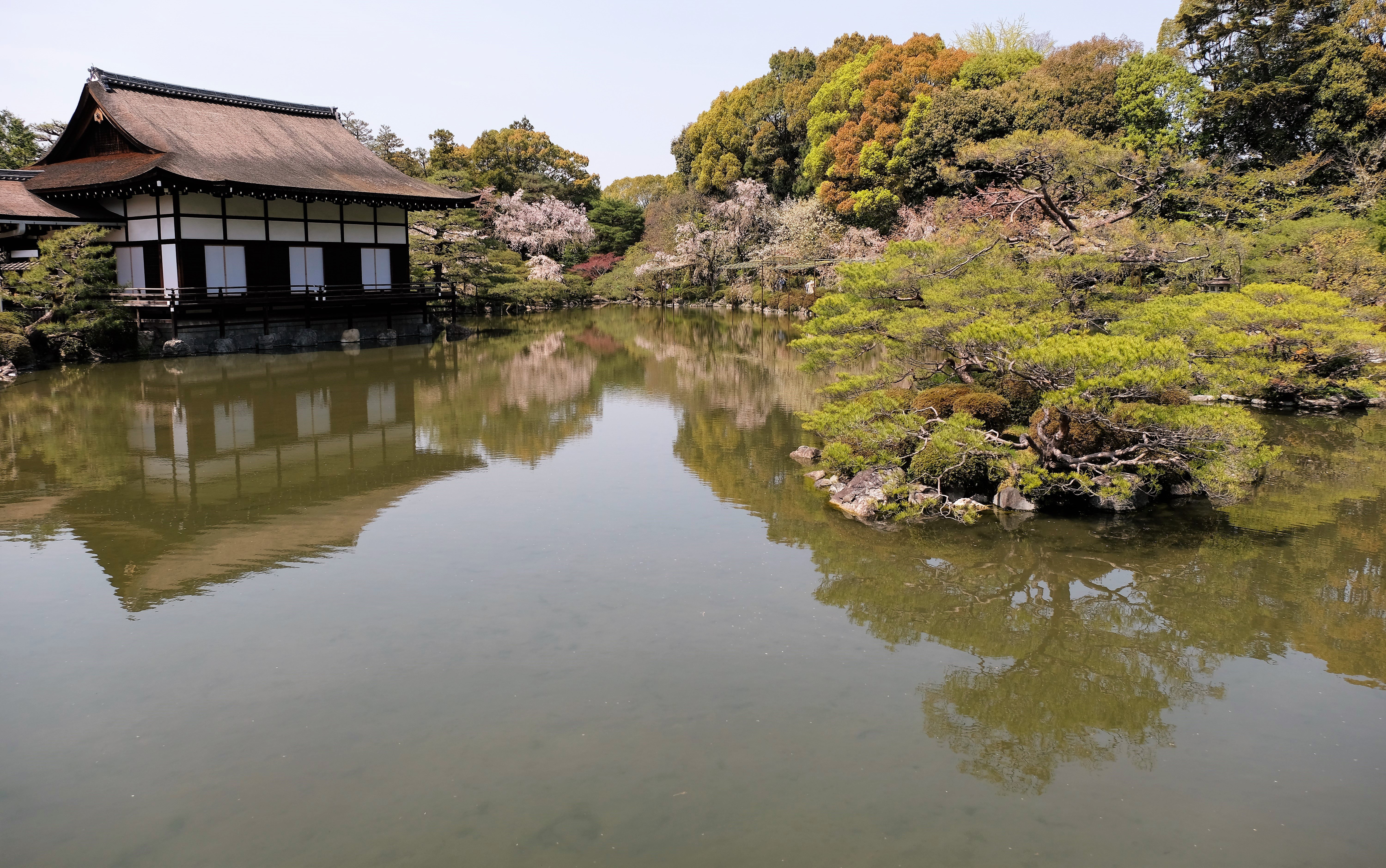
Cherry blossom season was in its latter stages. Whilst ambling through Heian Shrine gardens I couldn’t help be a little disappointed about missing the season when in Tokyo. Here the last remaining remnants leaving a blanked of pale pink petals covering the floor. The cherry trees still clinging to their last blossoms, making them look delicate and fragile. As always, the gardens intertwine seamlessly with ponds and streams. With the wind gliding gently across the surface, breaking it into thousands of mirrors reflecting all the colours of the garden. I’ll leave it at that, I hope you enjoy the pictures. As my blog post continue about Kyoto you’ll see many beautiful gardens.

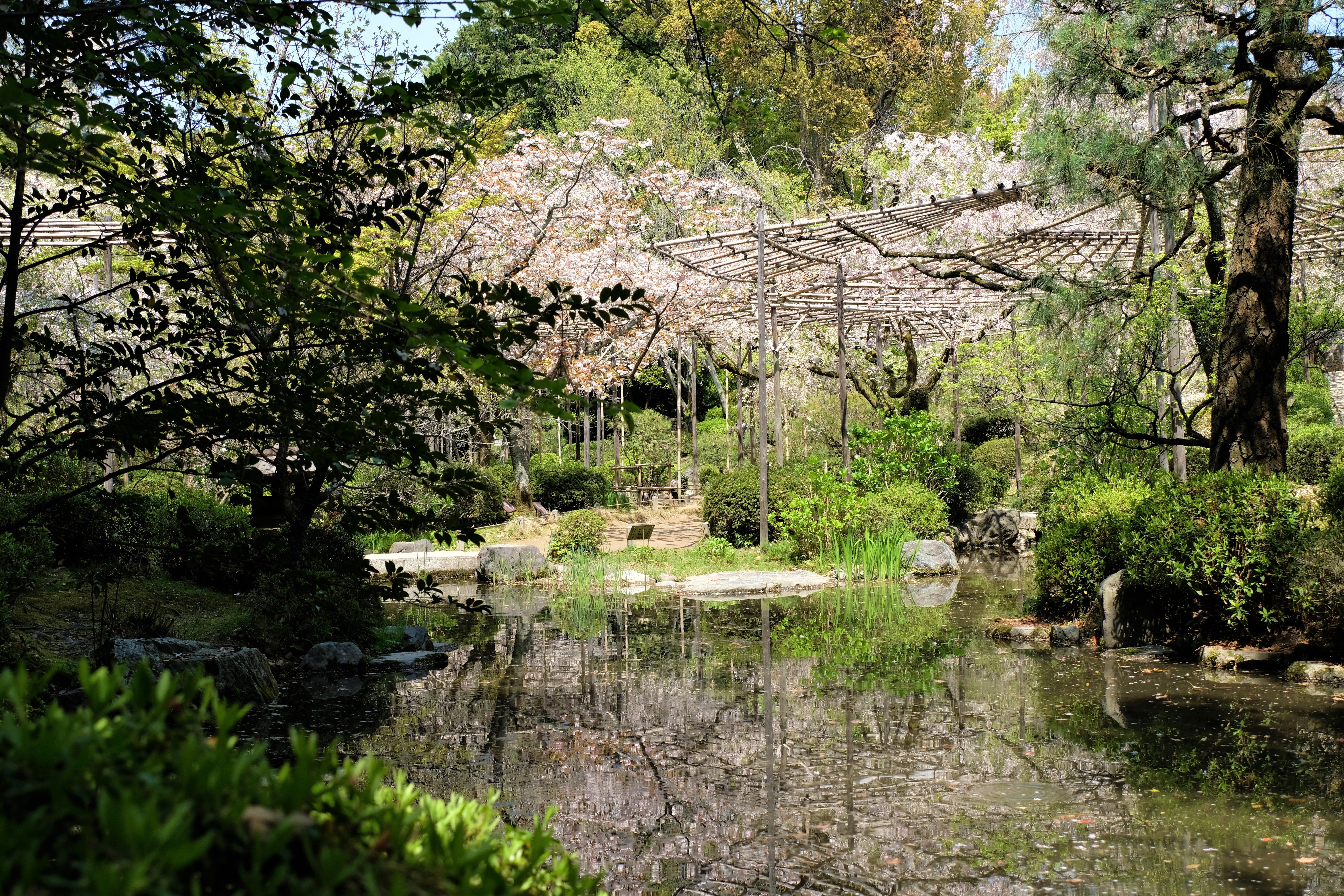
Kurodani, Konkai-Komyoji Temple
I was mildly conscious about time and sticking to my schedule. This led me to taking a shortcut join the Philosophers Walk around the half way mark. Along my route I passed over canals, streams, graveyards and a temple I completely dismissed, only having my objective in mind; getting to Ginkaku-ji. In a city full of history such as Kyoto it is very easy to pass something of great significance without even turning the eye…ignorance can be bliss!

I passed by Kurodani, Konkai-Komyoji Temple hurriedly, without a second though…it’s only a temple dating to 1175! Having been destroyed many times over the hundreds of years, I wishes I gave it the respect and time it deserves.

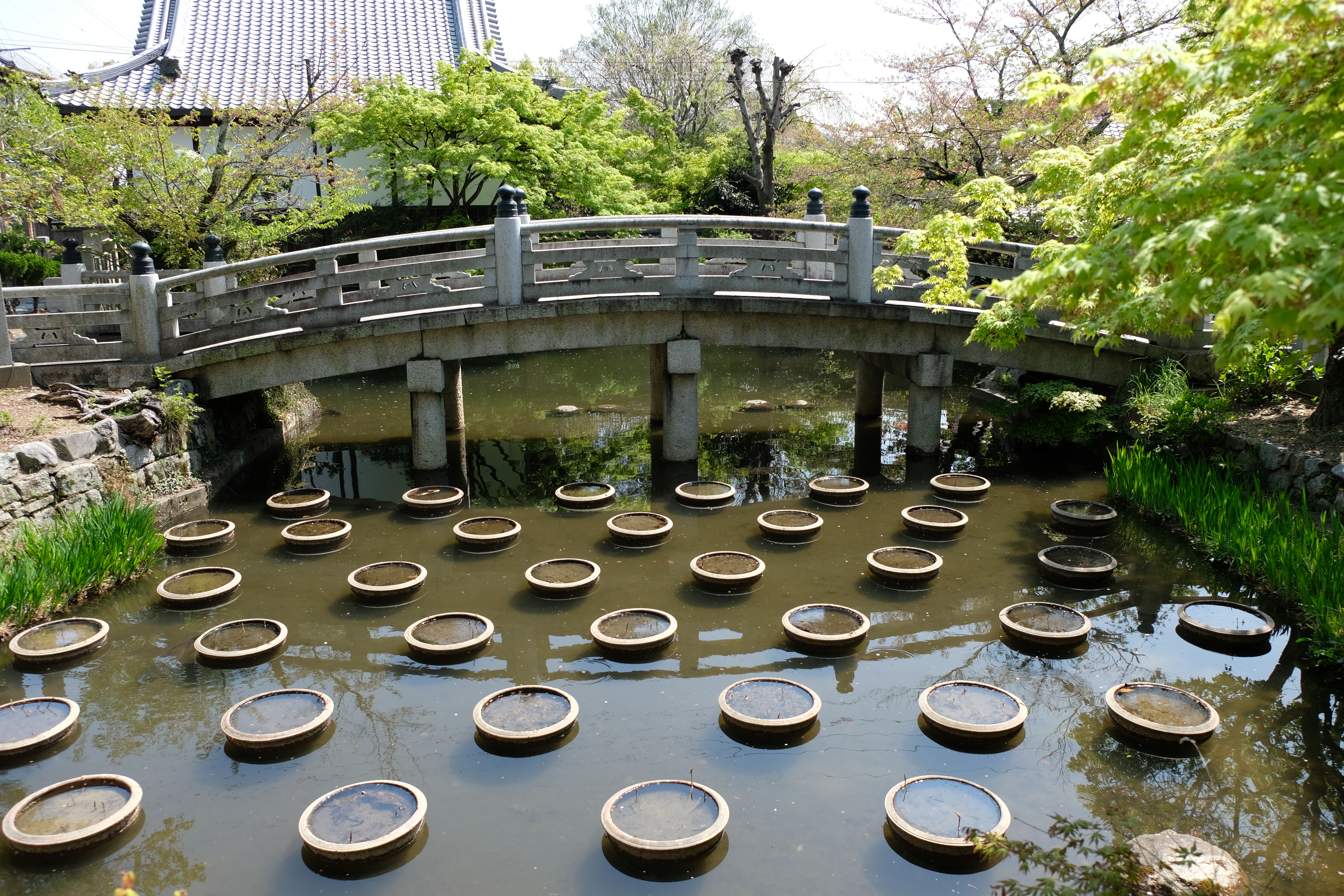
Ginkaku-ji Temple – Temple of the Silver Pavilion
Yes, I did start the Philosophers Walk half way through, but did the whole route when I left Ginkaku-ji Temple. That being said, it is well worth its own heading, so I’ll get into that shortly. Its official name is Jishō-ji (Temple of Shining Mercy), more commonly referred to as Ginkaku-ji Temple (Temple of the Silver Pavilion) – a Zen Temple.
Background
Ginkaku-ji Temple started off as a retirement villa for Ashikaga Yoshimasa (1436 – 1490) around 1460. Thrust into the position of Shogun at the very young age of seven or nine (I’ve found conflicting dates), due to the unexpected and untimely death of his brother, who fell off a horse. Born Ashikaga Yoshinari, he changed his name to Ashikaga Yoshimasa shortly after becoming Shogun.
Construction of the Kannon-den, the main temple building, commenced in 1482. No doubt drawing inspiration from his grandfather Ashikaga Yoshimitsu, who build the Kinkaku-ji (the famous Temple of the Golden Pavilion, which I visited later during my time in Kyoto). For Yoshimasa’s pavilion he was going to use silver foil instead of gold, hence the name Temple of the Silver Pavilion.
Construction was slow and interrupted in part because of the Onin War, and was never completed during Yoshimasa’s lifetime, or ever. The incomplete Kannon-den never had it’s finishing touch of silver foil yet has kept its name Ginkaku-ji Temple – this unfinished construction has an element of wabi-sabi; there is beauty in the unfinished. Yoshimasa used his villa as a retreat whilst war surrounded him and Kyoto. In 1485 he became a Zen Buddhist monk changing his name to Jishō-ji. After Yoshimasa’s death the villa and associated gardens became a Buddhist temple which was named after him, Jishō-ji. Today the temple is associated with the Shokoku-ji branch of Rinzai Zen.
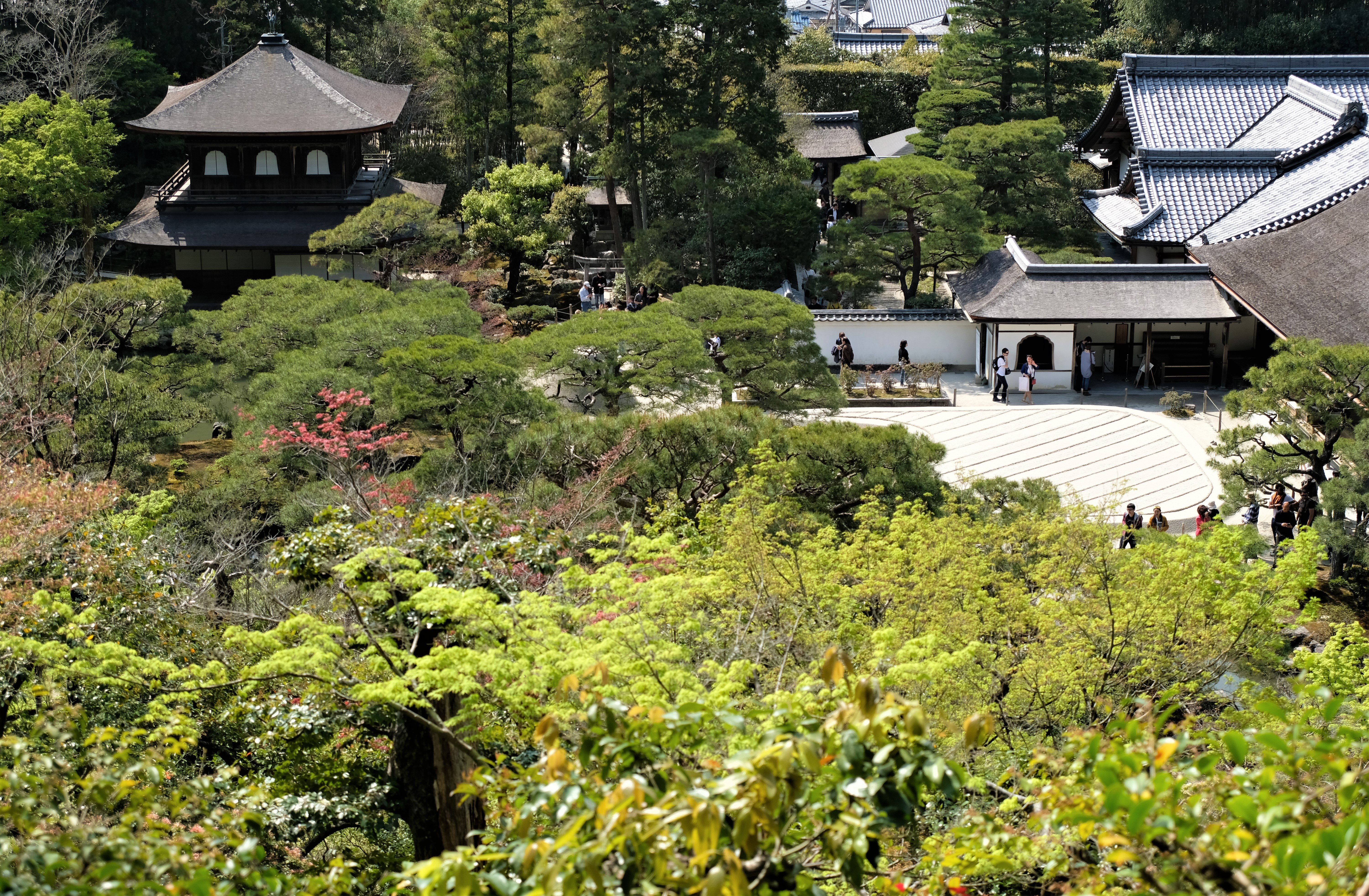
Back to the Ginkaku-ji Temple complex. Well, the Kannon-den is nice, though no entry was allowed when I was there, no problem at all. For me, the garden steals the show hands down! I know I said the Heian Shrine had a lovely garden, I also added a caveat when I said that ?. Ginkaku-ji garden is a master piece! From its gravel/sand garden, streams, ponds, moss garden etc. it is not a garden, it is a masterful work of art.
I’ve seen gravel/sand gardens before, none so perfect, nor on this scale or age. As you enter, the first display is a circa. 2m high cone gravel/sand mound. This cone, known as the Moon Viewing Platform (Kogetsu-dai). There are two stories about this cone, neither of which can be fully corroborated. Firstly, when viewed from the top floor of the Ginkaku-ji, it resembles a full moon’s reflection off the still water of the pond in the garden. Secondly, it was designed as a representation of Mount Fuji. Either way, even if it was made purely for ascetic reasons (very doubtful, the Japanese, especially in those times, just don’t do things that way) it’s still striking and masterly crafted.

I was surprised how coarse the gravel/sand is (henceforth I’ll call it gravel). I’m told that all they use to build it up is gravel and water…patience and time. Considering its composition, the Moon Viewing Platform is precise in dimensions, angles and surfaces. From the circumference sides to the top, it looks smooth from a few metres away. When up close it’s only possible to notice the coarseness.
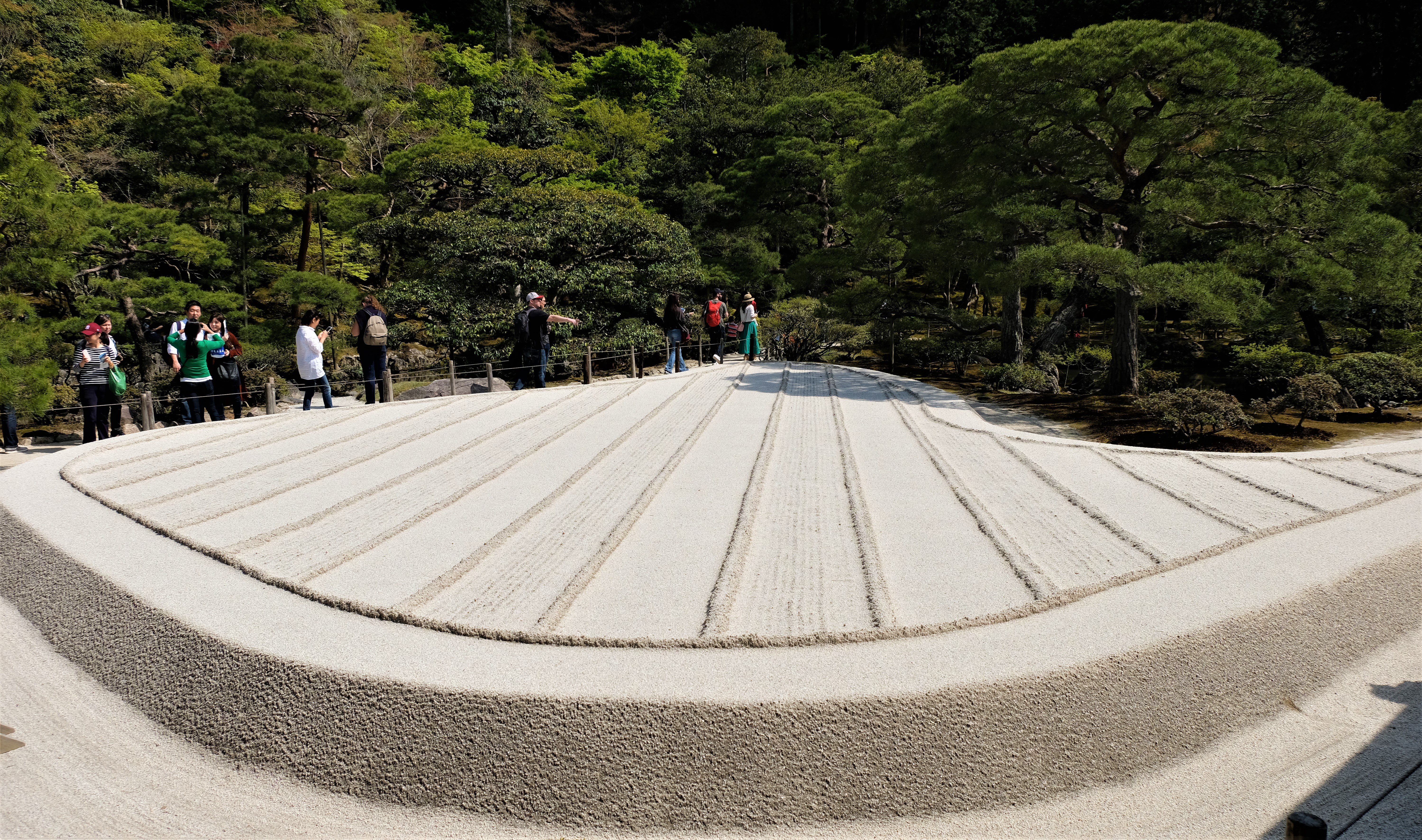
Adjacent to the Moon Viewing Platform is another gravel garden. Raised half about a metre high, with no straight edges it, it covers an area of about half a tennis court. This is known as the Sea of Silver Sand (Ginshaden). Different in every way to the Moon Viewing Platform, it’s curvy outline like to brush stroke of Japanese calligraphy. The top reminded me of a ploughed field, a field to be sown for a fragile crop. Alternating rows of flat surfaces and faint groves running the length of the garden. These rows boarded by a raised surface of about 7cm. They meet another boarder of the same height surrounding and inner circumference of the garden.
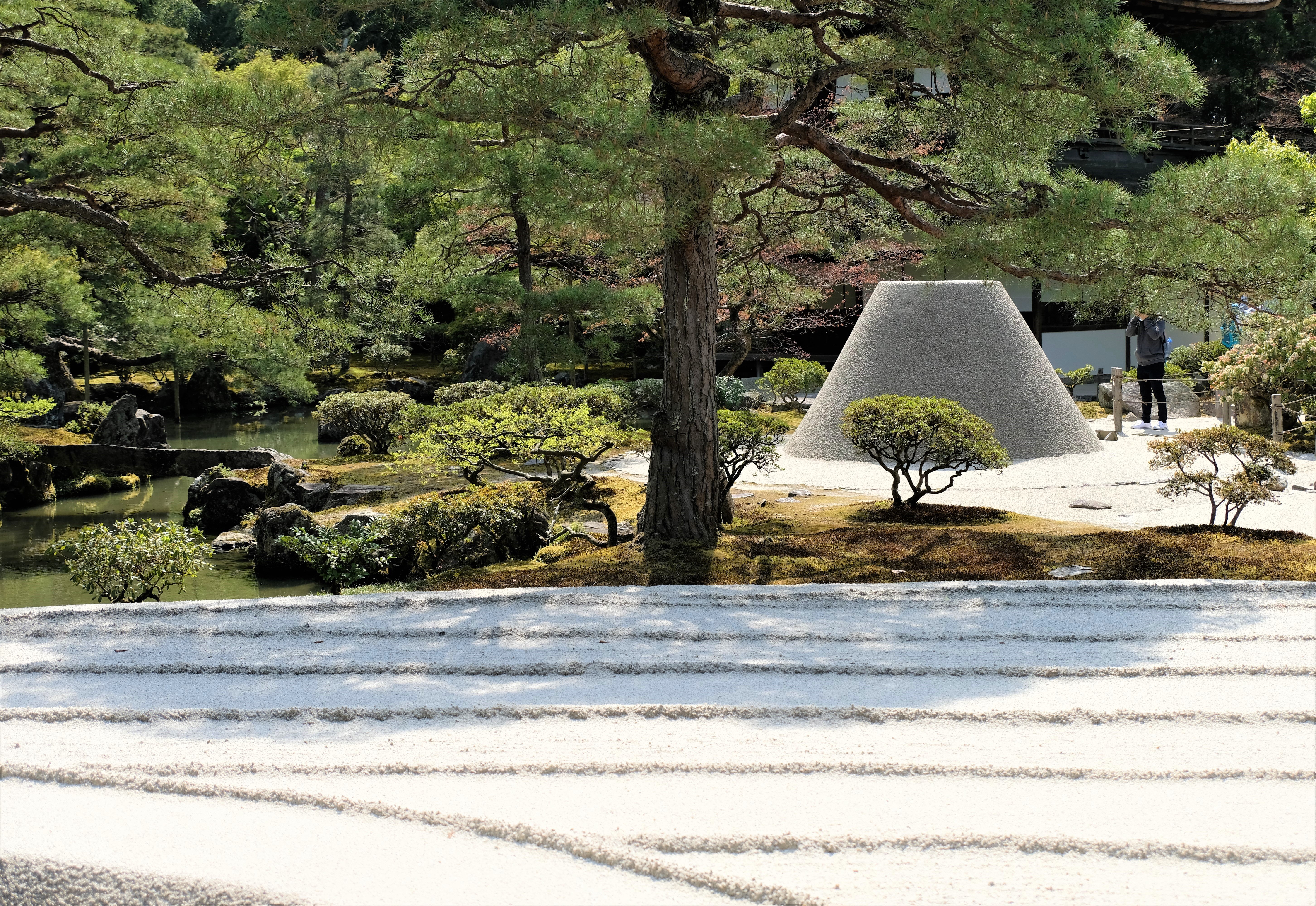
Just looking at the gravel gardens gives a sense of time, precision and care. How a dead substance such as gravel can portray such calmness is a testament of craftmanship. The garden is attributed (without definite evidence) to master gardener Sōami. Whether you like gardening or not, you would have to be a fool not to recognise the genius oozing from this stunning garden…artwork. As I’m sure I will repeat myself many times over whilst I write about Kyoto, their gardens truly are special. The remainder of the garden doesn’t play second fiddle to the gravel garden, oh no!
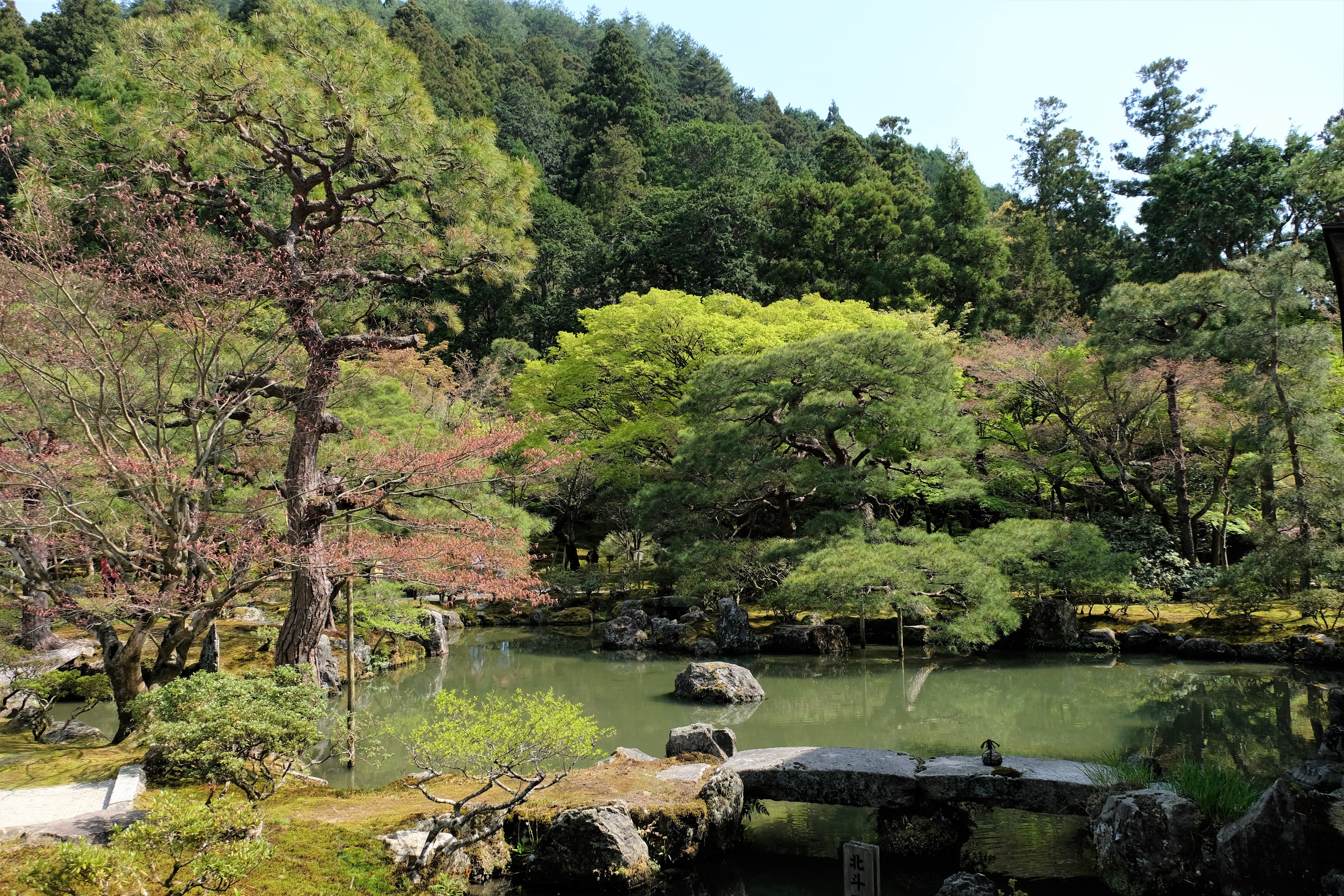
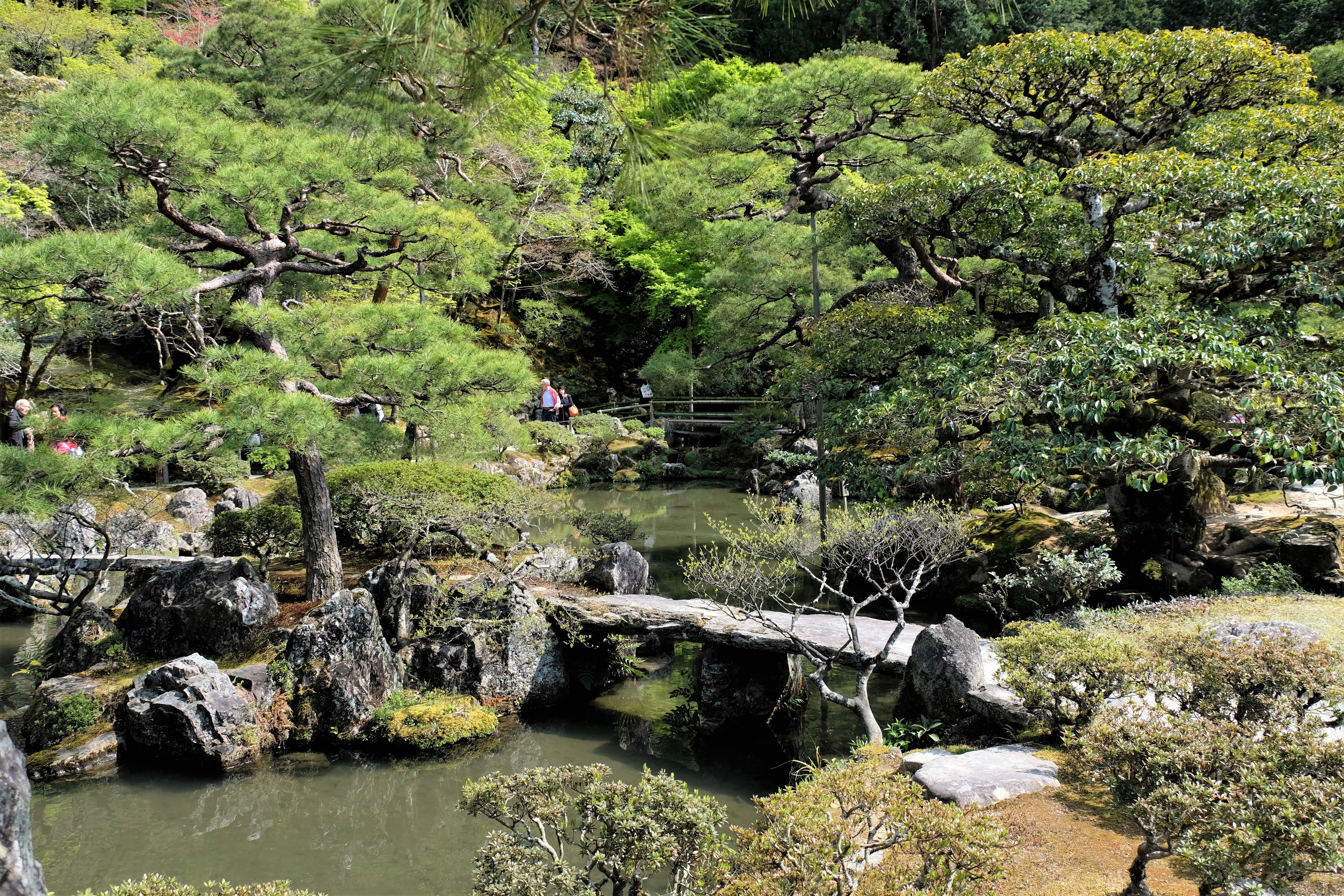
From the sounds of trickling water in hidden grottos, little streams, water features and large ponds. Everything has a natural feel, like a lost utopian garden untouched by man. I can see why Yoshimasa used this garden to escape the war surrounding him. Here the balance of nature sucks you into its world oblivious to the noise of everyday life. Here, you can contemplate the world and be at one with it.
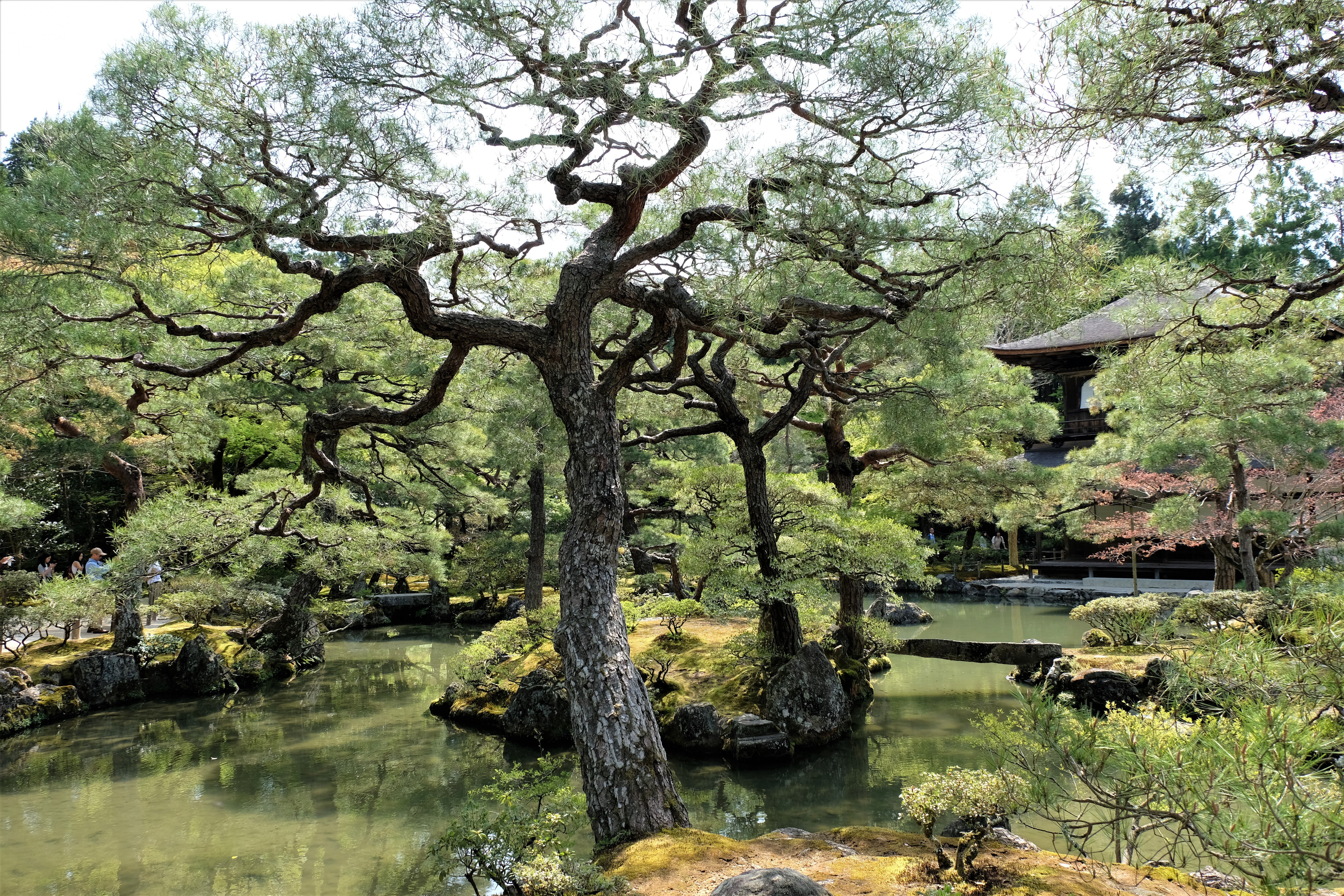
The art of manicured gardens to look natural was epitomised when walking through the lush moss garden. There, one of the workers was kneeled on the ground, working with what looked like a tweezer, pencil and cuticle pliers. It looked as if he was a surgeon, operating on each individual strain of moss. I watched him for about 15 minutes, during that time he didn’t move nor look up. To me watching a craftsman of any kind is fascinating and a privilege. I could write about Ginkaku-ji Temple garden for ages, but I won’t. I left the temple complex in a calm reflective mood and a content smile.
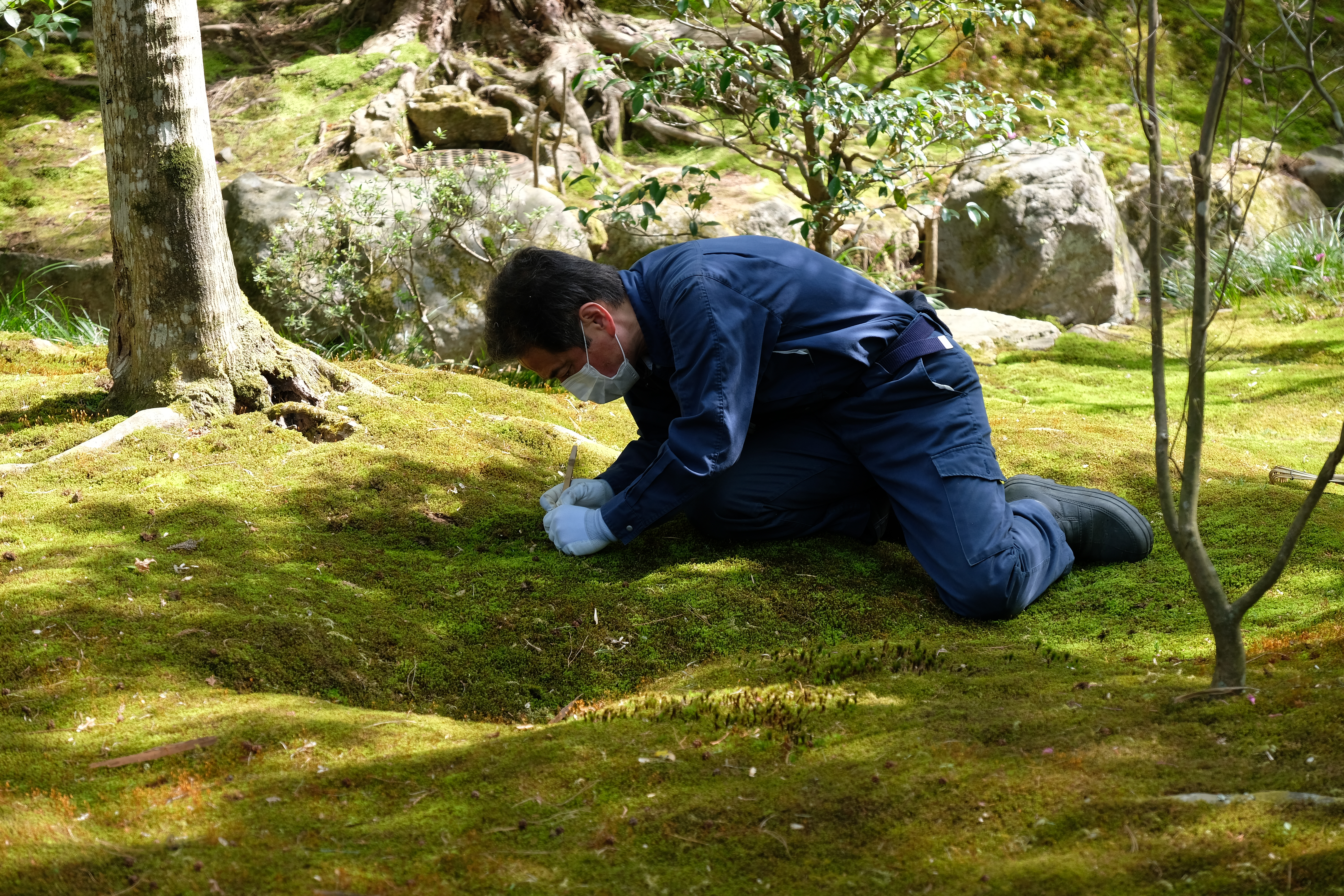
Philosophers Walk / Path of Philosophy
Leaving Ginkaku-ji I went through the little village high street as you exit. Only a little main road, filled with interesting shops, some tourist trinket traps too, but mostly artisan types and ice cream shops. The place was packed with tourists which didn’t deter me because of the mood I was in. The Philosophers walk ends/starts near the entrance of Ginkaku-ji – at the bottom of the high street (at most 100m) leading through the village. The walk ends/starts at the Nyakouji jinja Shrine, along a walkway g beside a canal for about 1.5km lined with cherry trees. The walk’s name comes from a 20th century Japanese philosopher who is said to have walked the route daily whilst meditating, Nishida Kitaro


The walk is what you make of it. Along the East side there are a more temples/shrines (I’ll get into some of them shortly). The route has a few coffee shops along the way too, not commercialised at all. With more artisan places than coffee shops, and quite a few pottery studios with small attached galleries – no bigger than a double garage. These are genuine studios, nothing touristy at all. All of what I saw was exceptional quality. The potters themselves seems reserved but happy to chat…even with language being a hindrance. One of the potters was a third-generation potter, I’ve lost his card and don’t remember his name GRRRRR!
Walk/Path of Philosophy is the kind of place that if I lived in Kyoto, I could see myself visiting regularly. Peaceful, colourful with the sound of gentle running water as the underlying soundtrack. Again, being South of Tokyo, cherry blossoms were still about, giving the walk an air of fantasy. The canal water was as clear as glass, with plenty of fish swimming about looking for respite from the sun in the shadows cast by the overhanging trees.
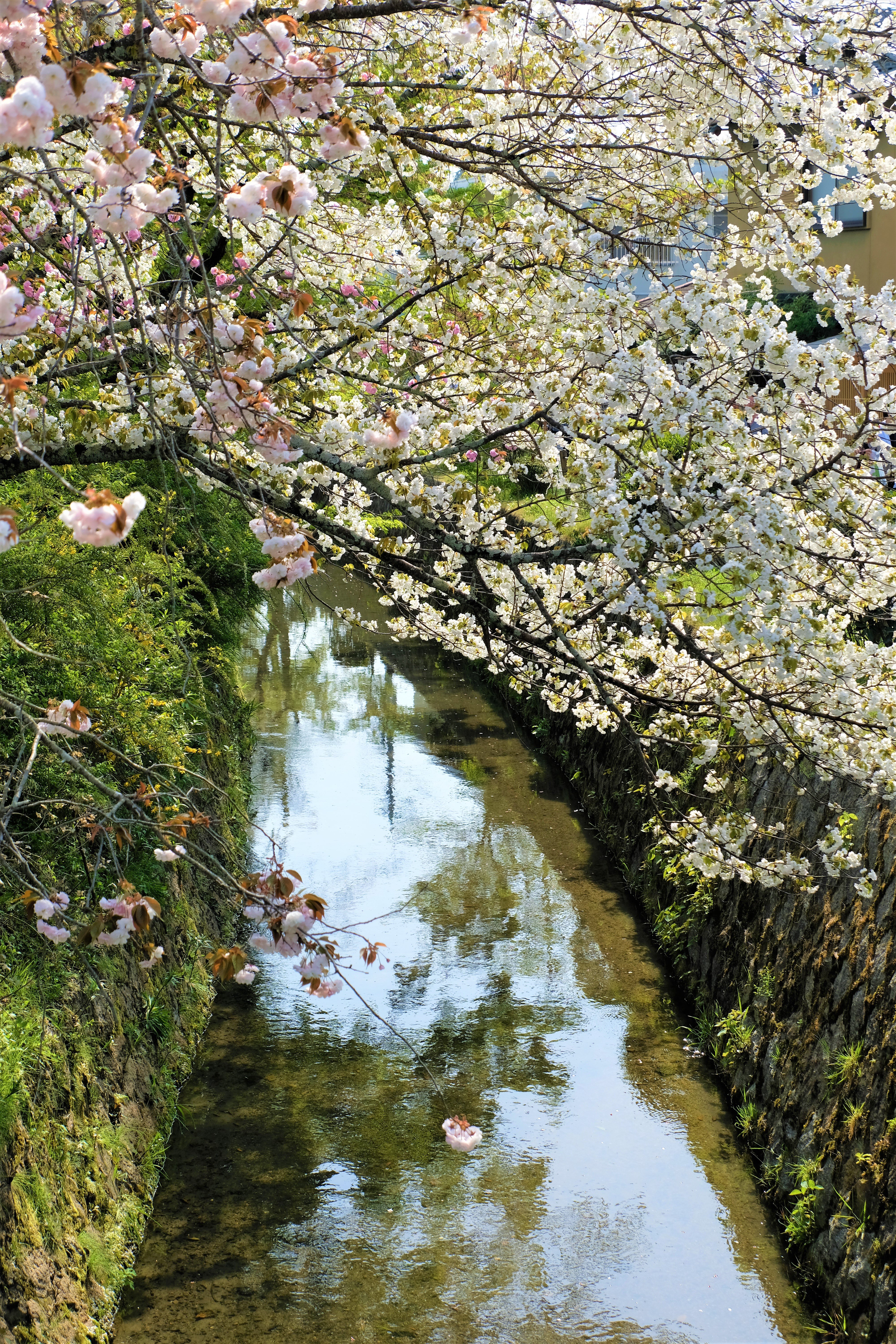
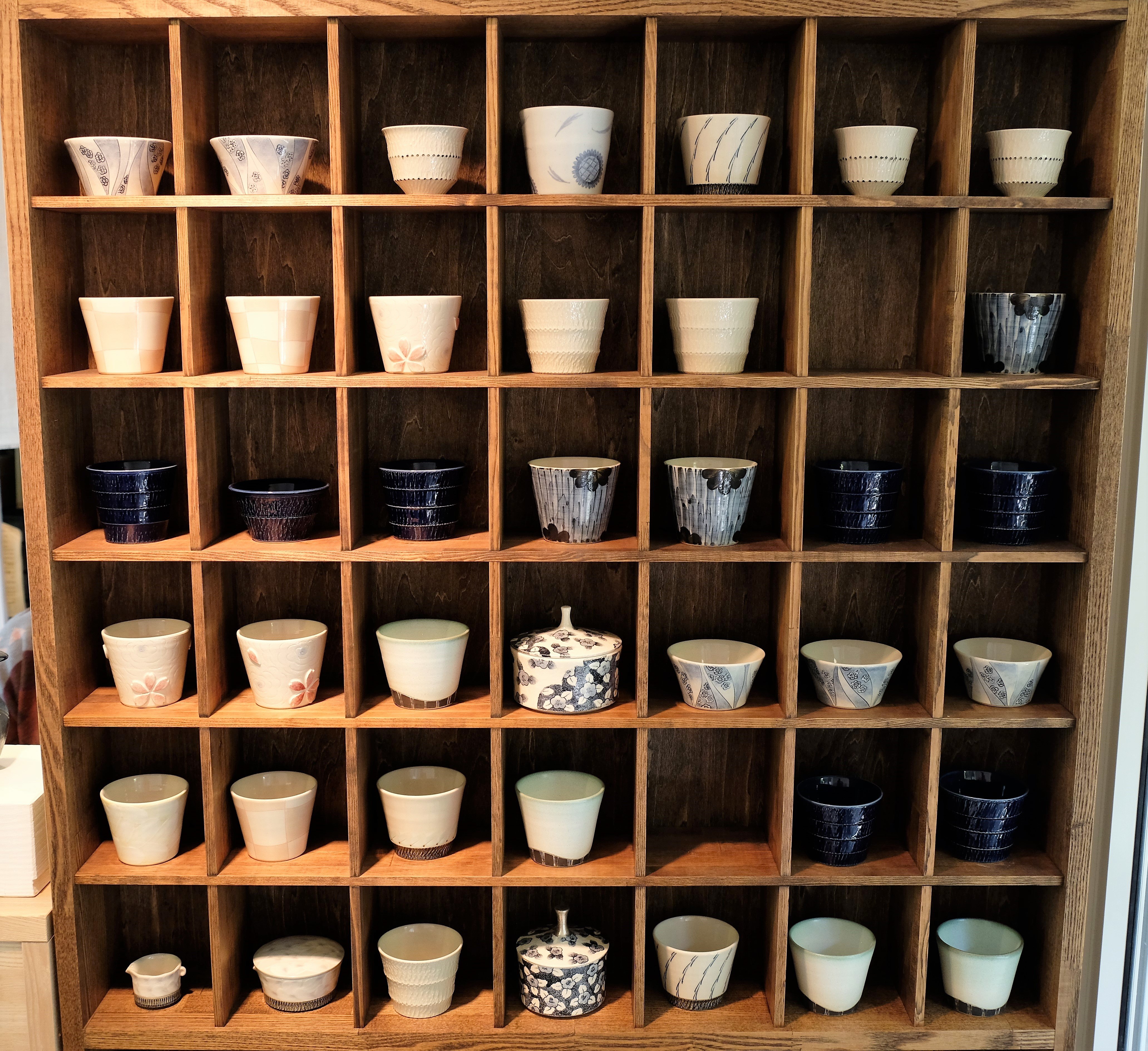
Honen-In
I made a few detours along the Philosophers Walk, after which returning continuing South. One of these detours was visiting Honen-In. Honen-In is a small temple located at the base of Mount Nyoigadake, surrounded by natural forest. Not that frequently visited, when I went there was at most a dozen people. I wouldn’t put it in my list of top temples/shrines, nonetheless it has a peaceful environment. A light breeze rustling through the trees that almost shade the entire temple, gives the place a secluded quality. I didn’t spend too much time there though. Honen-in is the birth place of the first independent Japanese of Pure Land Buddhism in Japan called alled Jōdo-shū, in the early 13th century.
The temple was named after the monk Honen (May 13, 1133 – February 29, 1212), who grew dissatisfied with what he had been learning and went searching for greater meaning in life. After studying at many monasteries, he came across and old manuscript written about 600 years earlier by Shandao. This would be the foundation of his new sect of Buddhism. Honen’s departure for the 8 main sects garnered a strong following from lower class right through to nobility, this to the displeasure of some other sects. He was banished from Kyoto for nearly seven years, the year after his return he died.
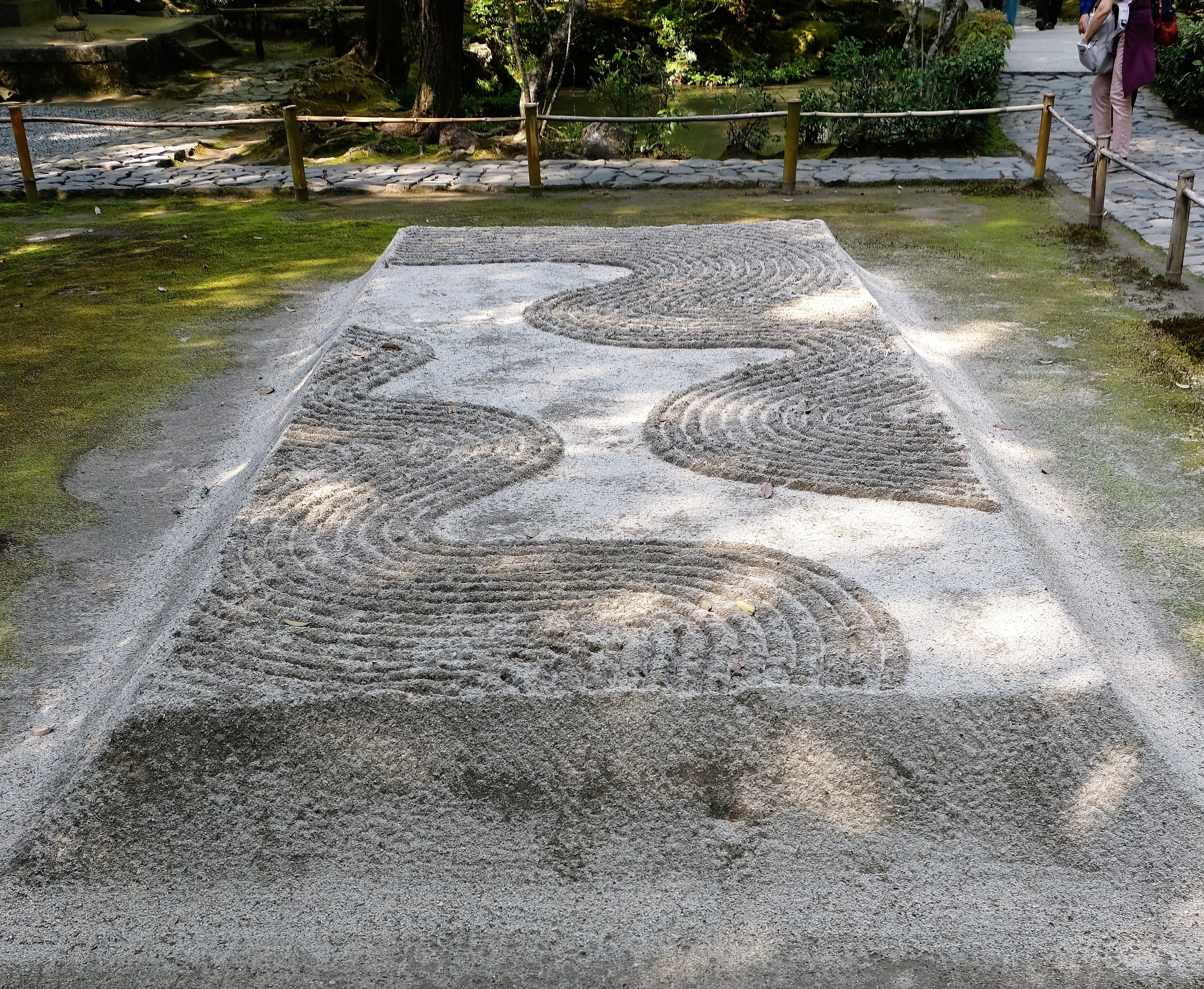
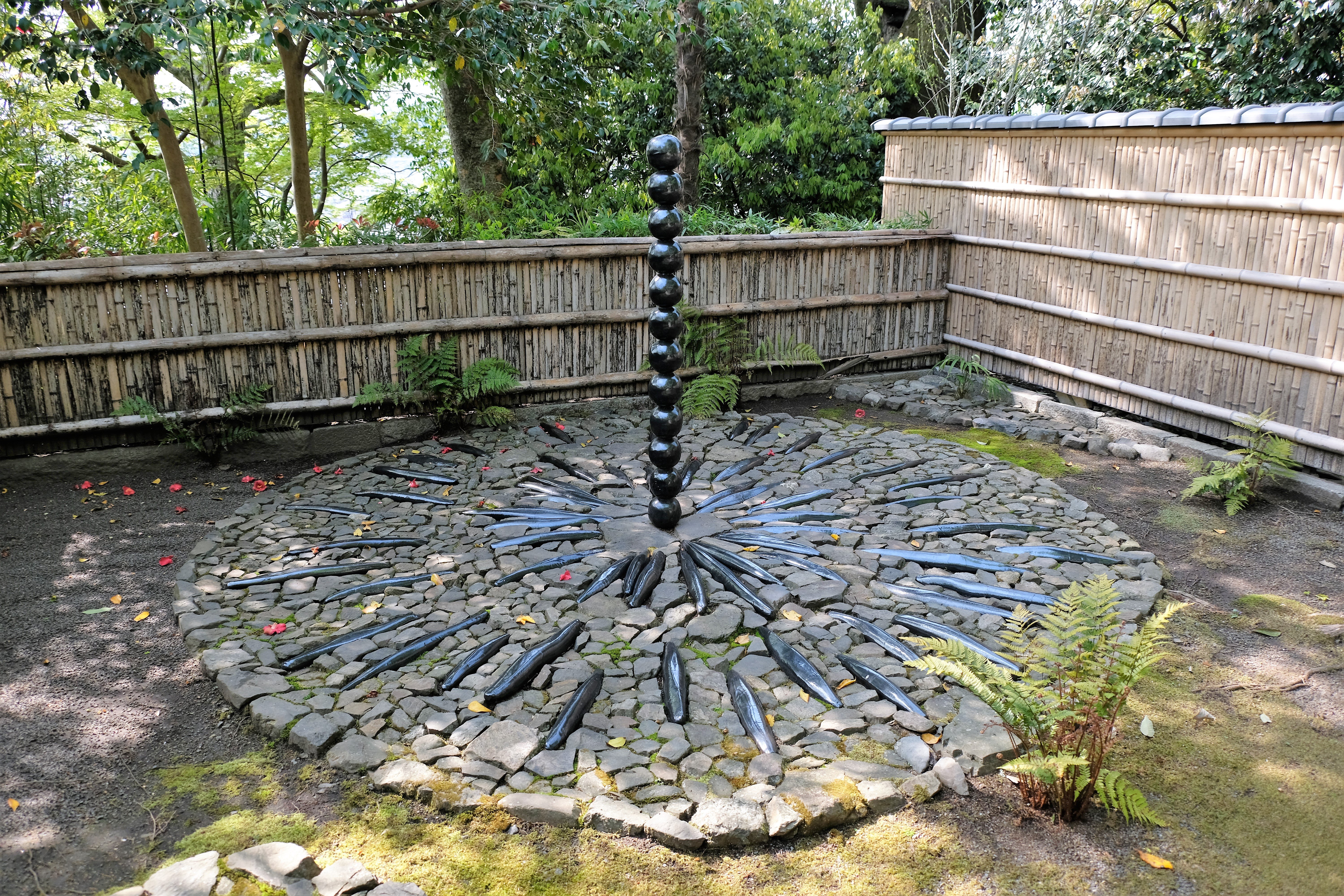
Eikan-do Zernin-ji
I had hope to visit two other temples along the Philosophers Walk (Anrakuji Temple and Reikan ji Temple), especially for their Zen gardens, unfortunately they were closed. Never mind, Eikan-do Zernin-Ji was open, and well worth the visit. Eikan-do Zernin-Ji is the head temple for the Seizan branch of Japan’s Jōdo-shū (Pure Land) Buddhist sect. One of the founders of the sect, and first head of the Eikan-do Zernin-ji was Jōhen (1166-1224, who was a follower of Honen. The original temple dates back to the 9th century which was started as a temple to worship the Five Wisdom Buddhas. Later in the 12th century it changed to Jodo-shu.

The grounds of the temple complex are big, more widely spread out compared to others I had visited that day. Maybe should have spent more time visiting, but with entrance fees to almost everything it’s not possible to see and do everything. Nevertheless, I wondered around the gardens and admired the wooden architecture of the temple. At a distance the buildings have a staunch demeanour, with little colour except for the rainbow array of flags hanging from the porch roof. The flags waving and whipping as if pumping air into the lungs of the temple.
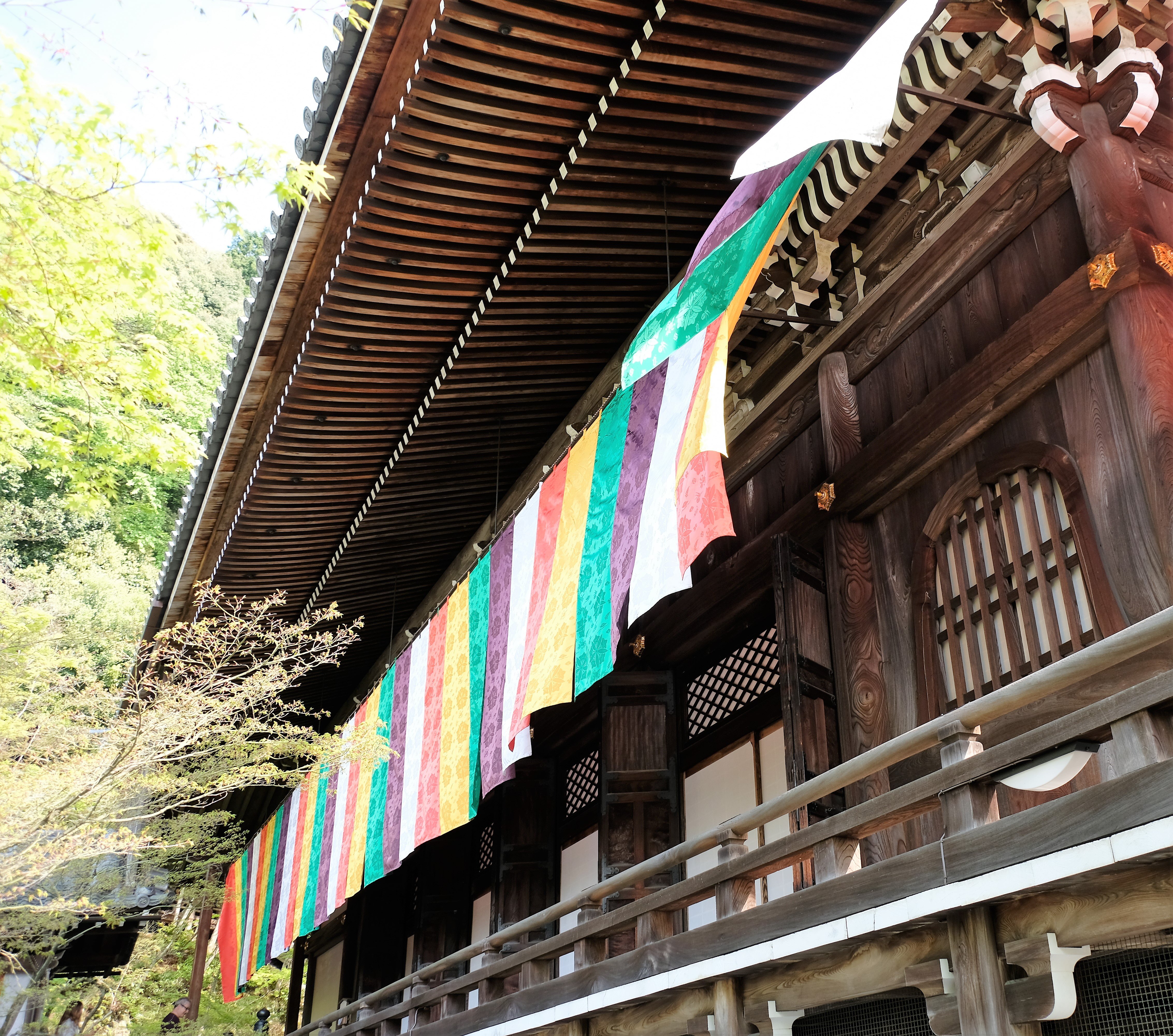
Up close, the carpentry skills and ingenious designs becomes apparent. Considering the age of many of these temples, coupled with the fact that Japan is in an earthquake fault, these buildings have stood the test of time. They are designed to moved and bend, this flexibility allows them to withstand earthquakes. A technique and knowledge gained over hundreds of years, only within the 20th to be honoured for its design. It was heading towards the end of the day, so after a slow walk around the pond of Eikan-do Zernin-ji I continued with my day.
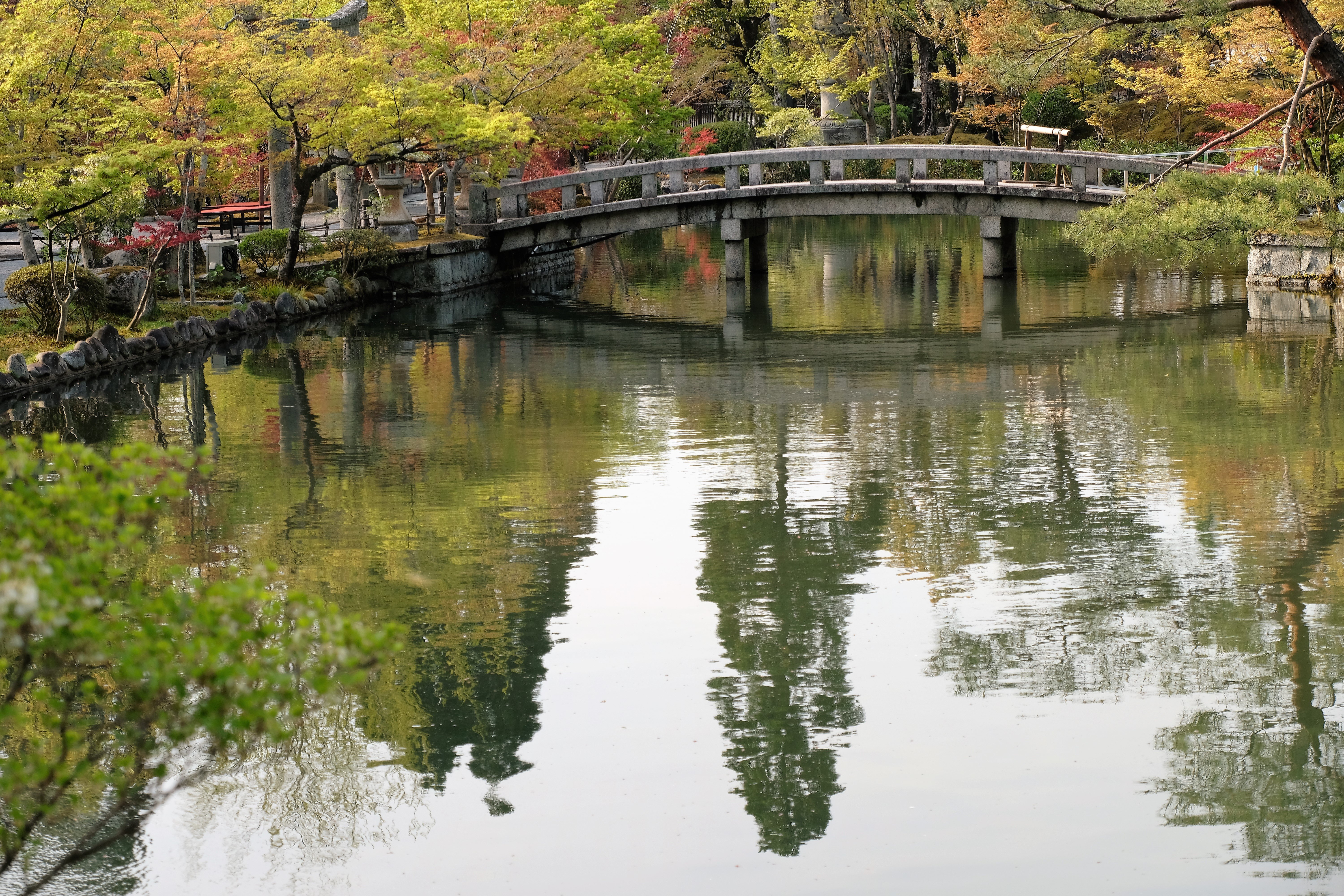
Nanzen-ji
This would be my last stop of the day. Nanzen-ji temple, also known as Zuiryusan Nanzen-ji used to be called Zenrin-ji, started off as a detached palace of Emperor Kameyama (90th Emperor of Japan) in 1264. The emperor became a student of the Zen Master Busshin Daimin Kokushi, later becoming a priest himself. In 1291 he dedicated this palace as a Zen temple. The grounds and buildings are spread out, much more so than any other temple I have come across – I guess that’s because of its original use. Large parts of the complex have been destroyed by fire in 1393, 1447, and 1467 only to be rebuilt in 1597 and expanded during the Edo period.
As you entre the grounds, the first thing you see (its so big you see it long before you get there) is the main gate, the Sanmon. With the setting sun I couldn’t get the best of pictures looking straight into the glaring light. Even so, its an impressive structure. The dark aged wood Sanmon nestled by lush new green leaves of the trees surrounding it. Its flared roof covering the upper floor view point, I’m sorry I didn’t go up. Why I didn’t I don’t know.
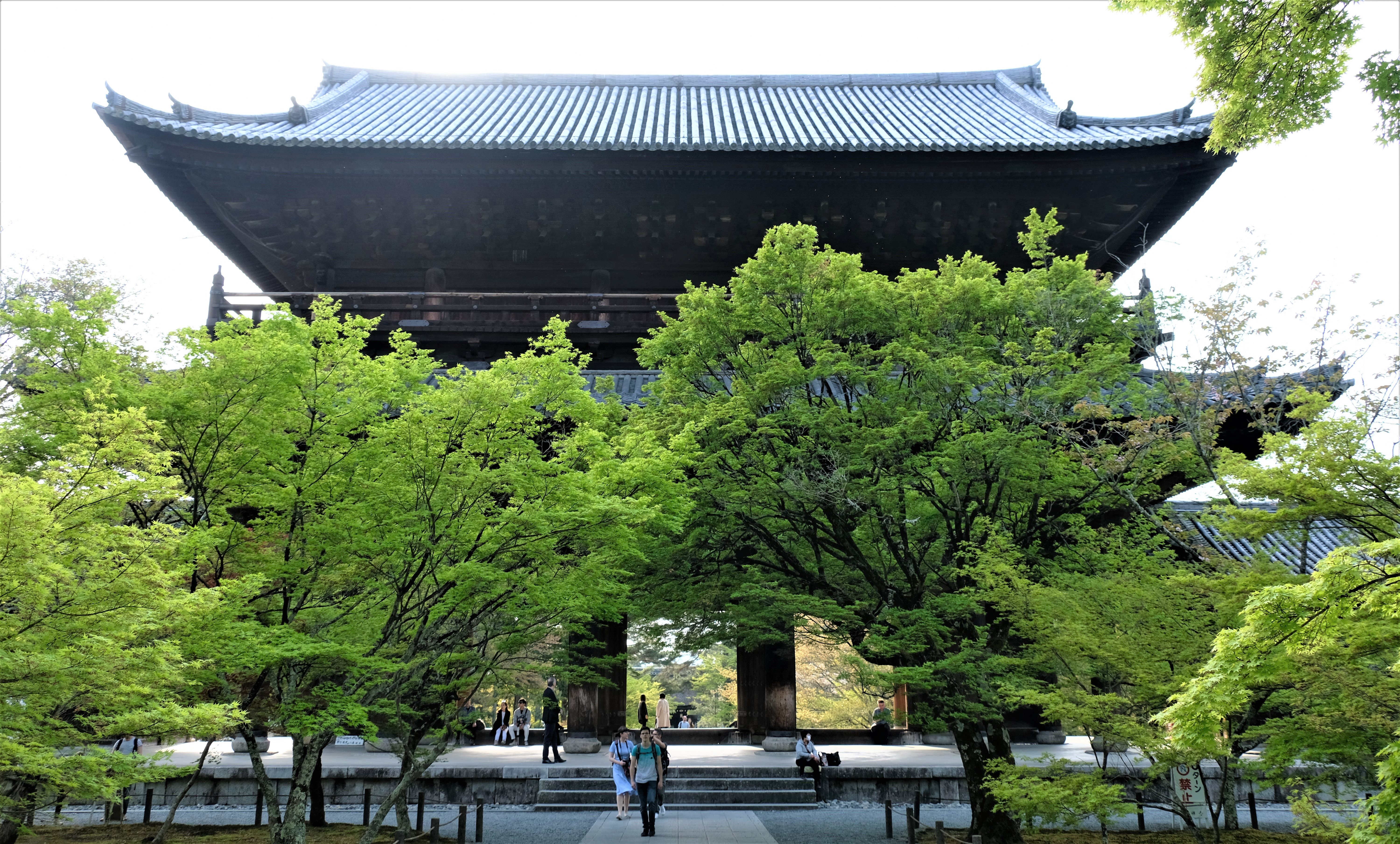
Fatigue was beginning to set in, a combination of lots of walking and the baking sun. I really didn’t give that much time to Nanzen-ji, in my defence most of the buildings were either closed or partly closed. An oddity of the complex is the aqueduct, Suirokaku Aqueduct. The aqueduct seems so out of place, architecturally yet blends into its setting. Taking nine years to build (1881 – 1890) during Japan’s rapid modernizing to supply water from Lake Biwa to Kyoto city. It definitely has a Western style, I guess they hadn’t yet defined their own “modern” style.
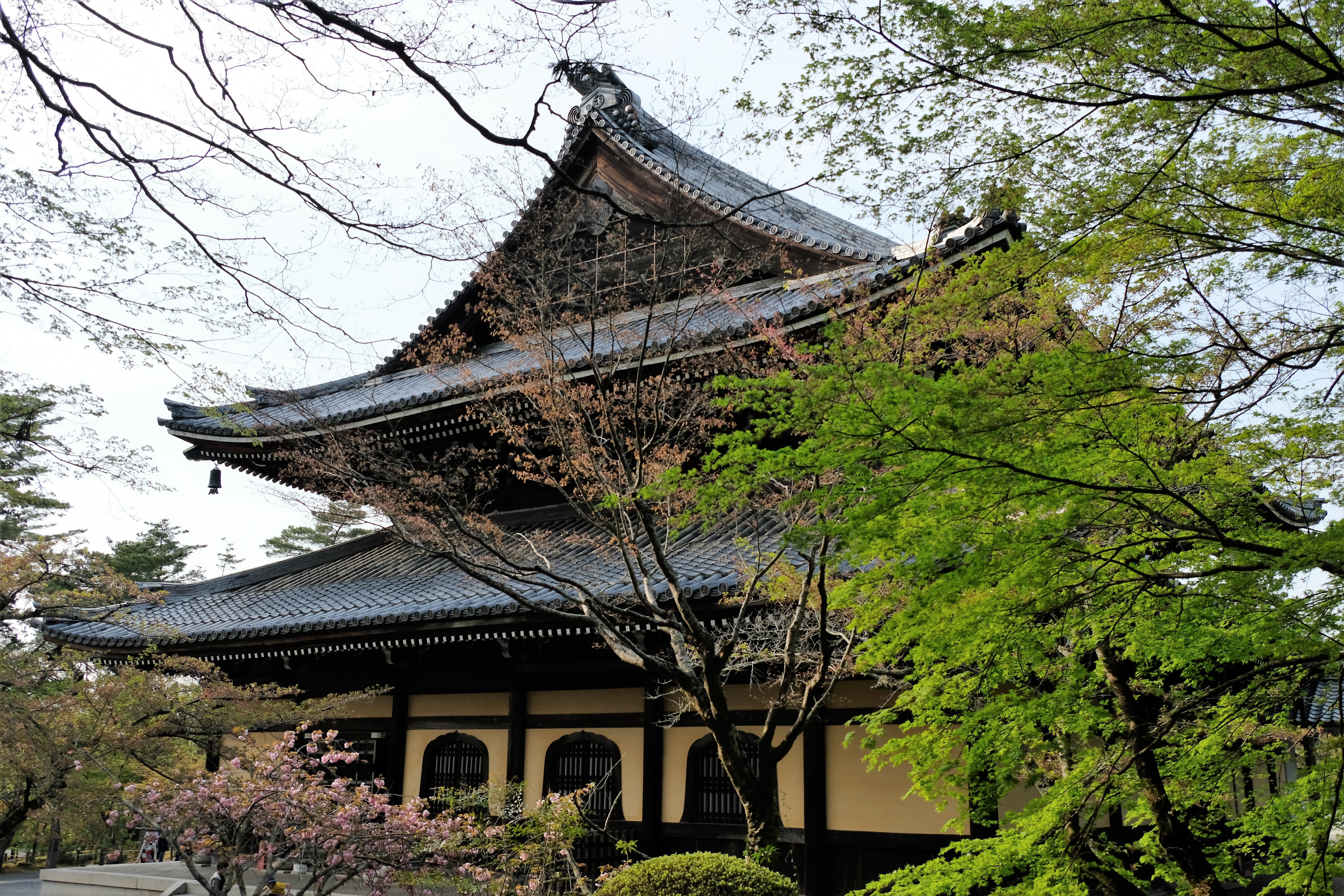
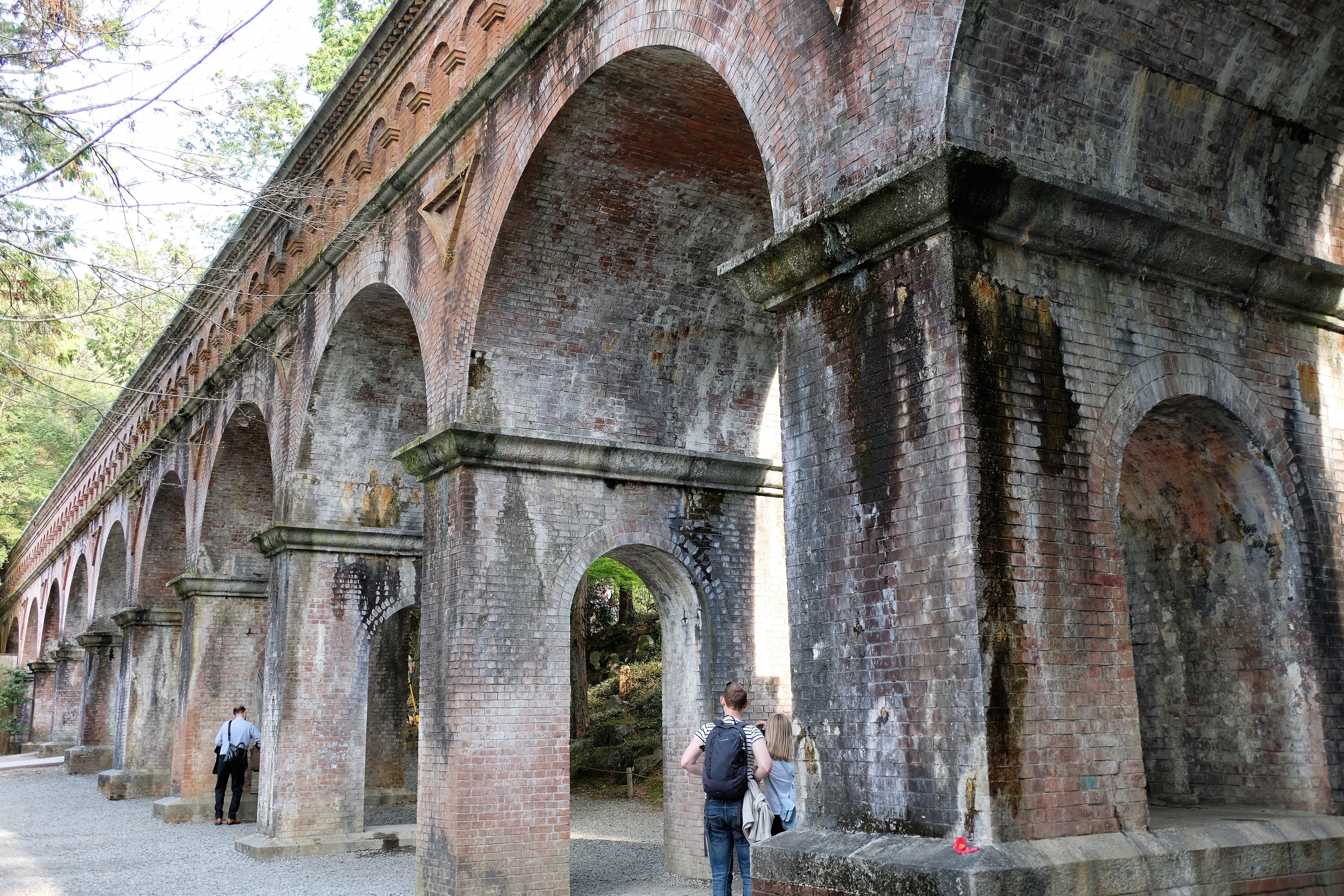
Tenjuan Temple
Tenjuan Temple was the only part of Nanzen-ji that was open, half open, only the garden. It was a nice way to end a day of site seeing though. With a small gravel garden and lots of ponds with overhanging trees filling up with fresh spring leaves. With the day coming to an end I had the whole garden to myself, which made a change from most of the day. Maybe that’s a perfect metaphor for my experience of the day, finishing it off in quite calm surroundings – perfect Zen

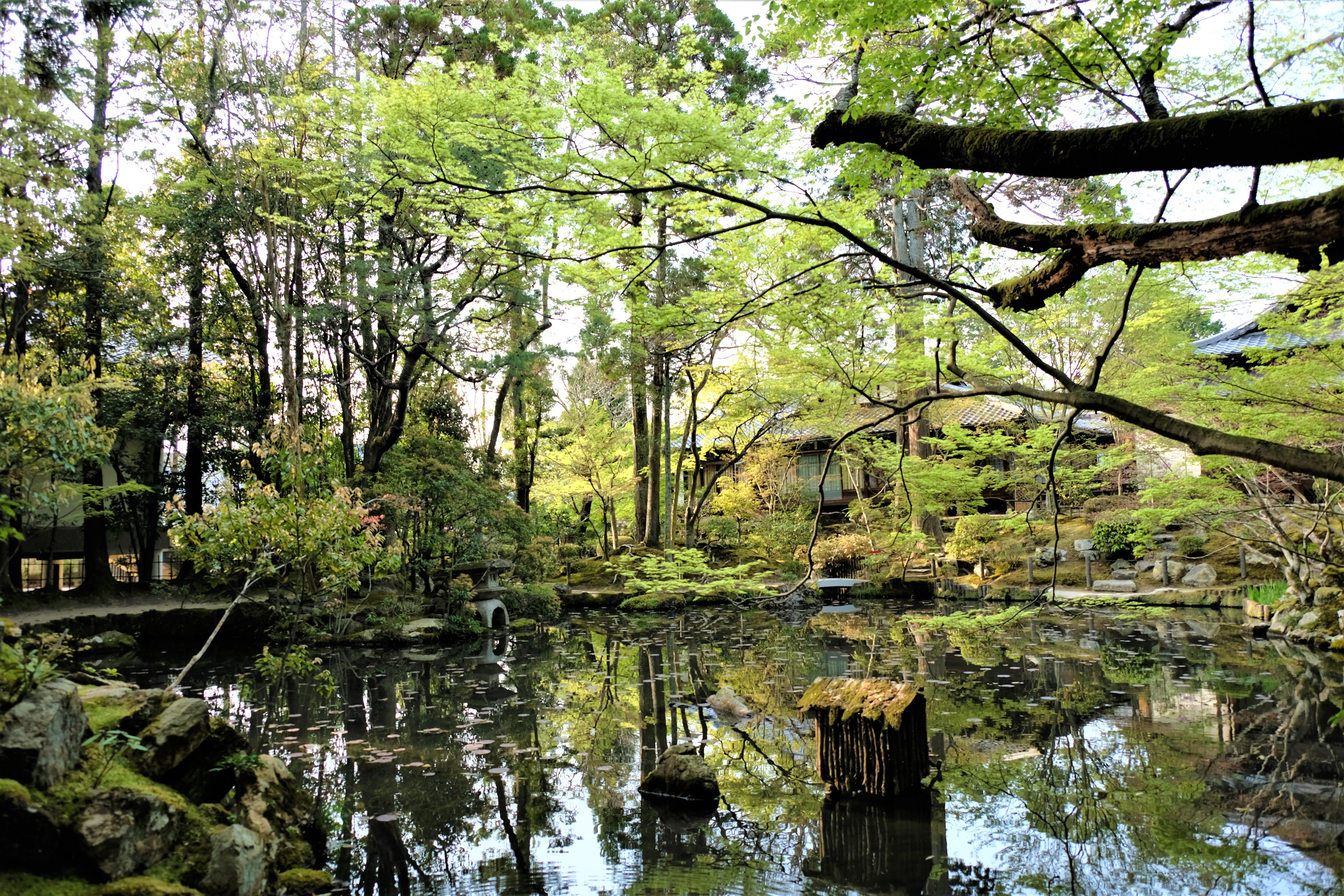
After the daunting thought I starting to write about Kyoto I have finally finished my first day! Hardly a feat to brag about but I’m glad I have. Over the past few days I have felt energised and happy to write, I hope if you are reading this, I haven’t bored you to death. I appreciate this is a longer post than normal, it wasn’t planned. For the next for posts I think it should be back to normal length…I hope. Thanks for reading, who ever or where ever you are
An added extra. I took a few photos whilst walking back to my hotel and wanted to included them.
PS. If you’ve missed my previous post, here is the link Last day in Tokyo

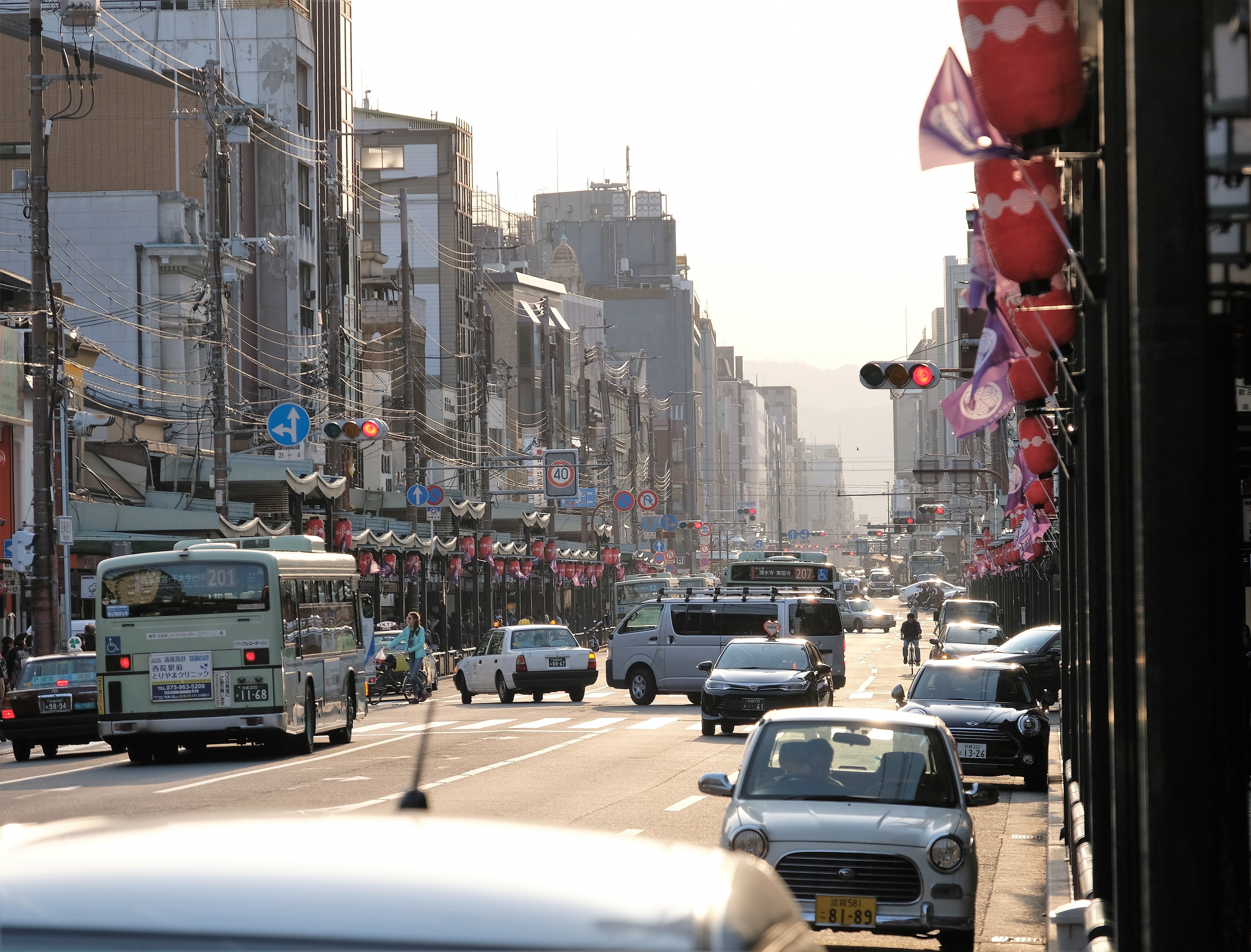


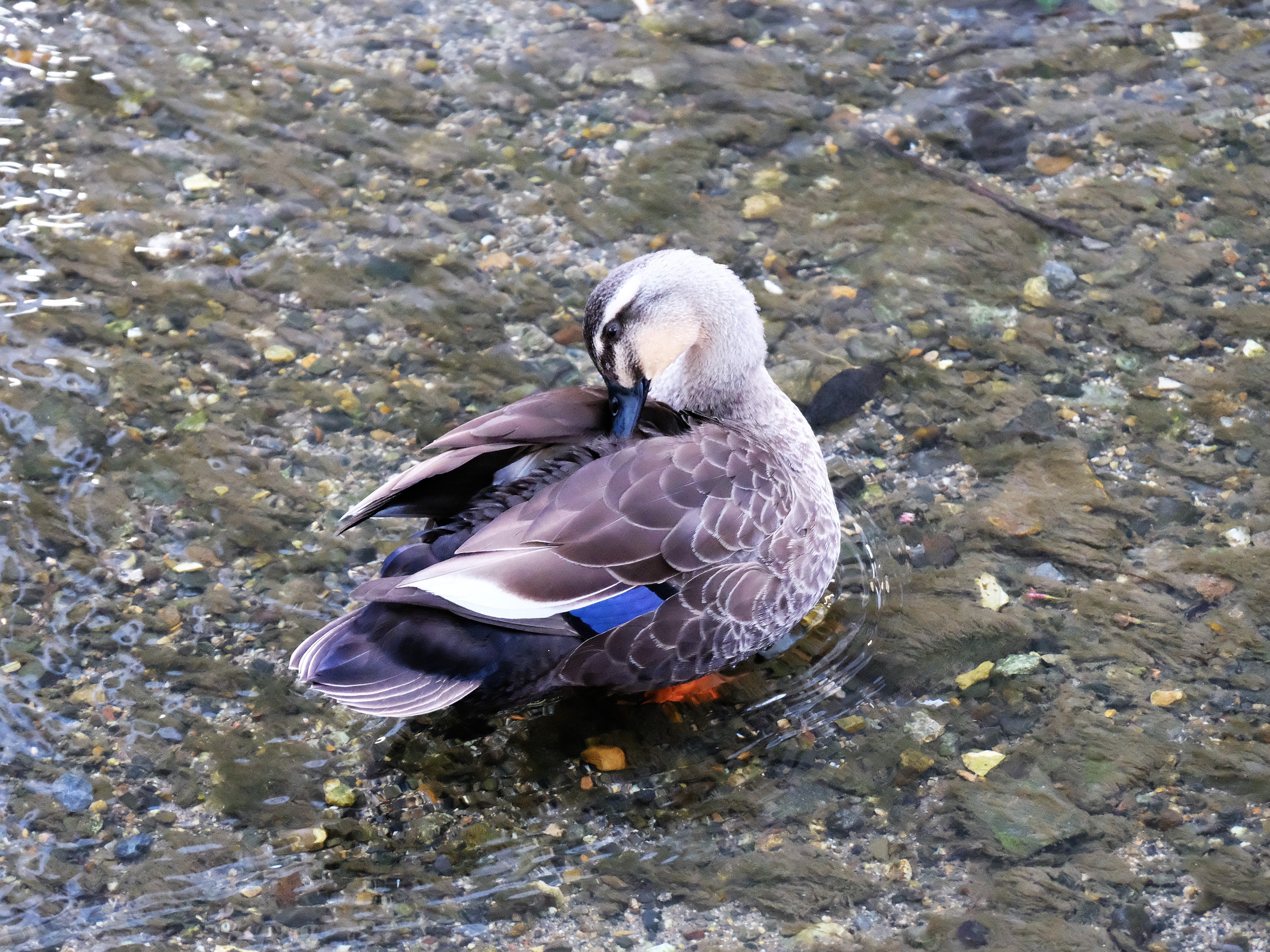
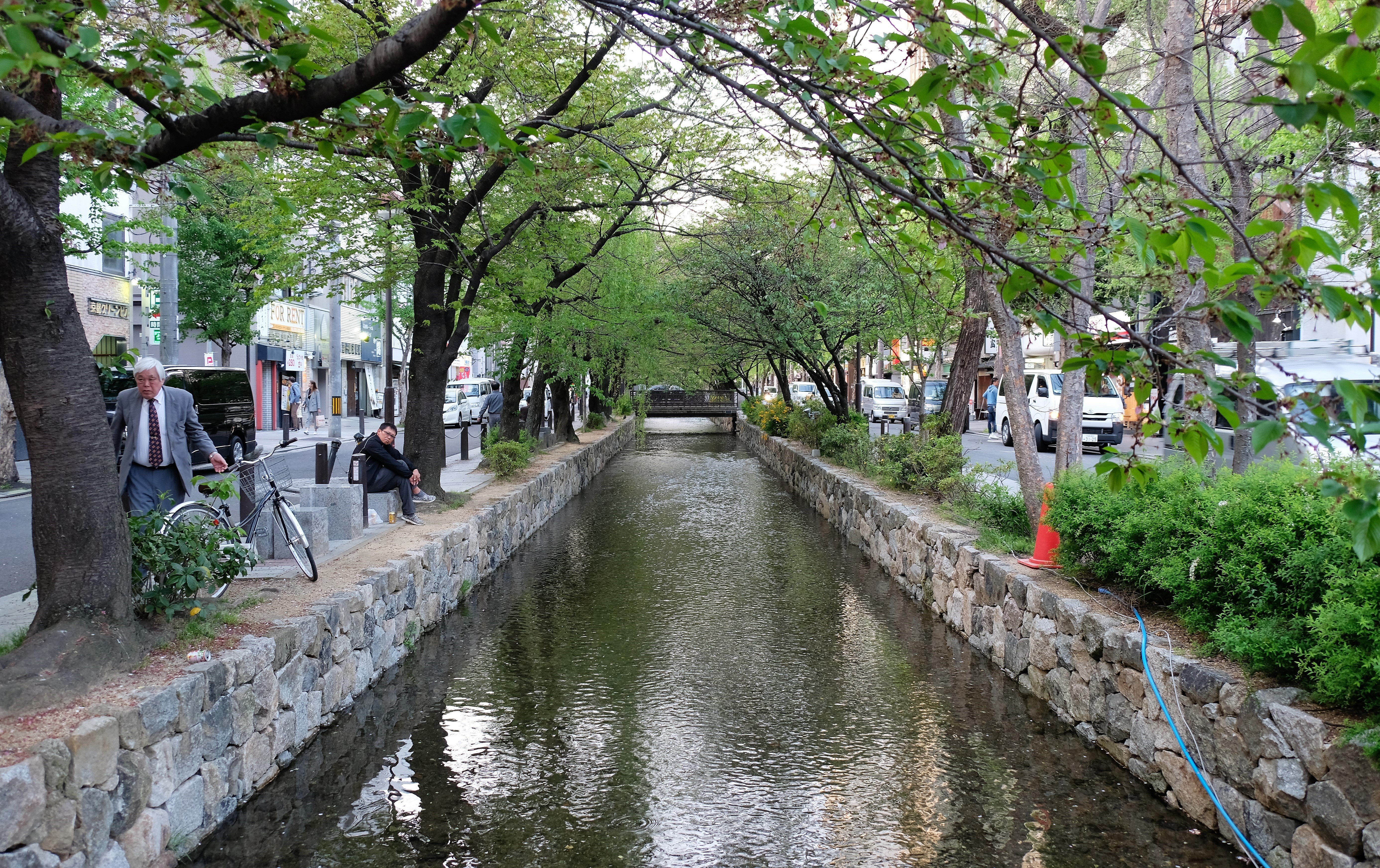

It’s been such a long time since you wrote, I forgot how much I missed the writings. I loved this Ryan